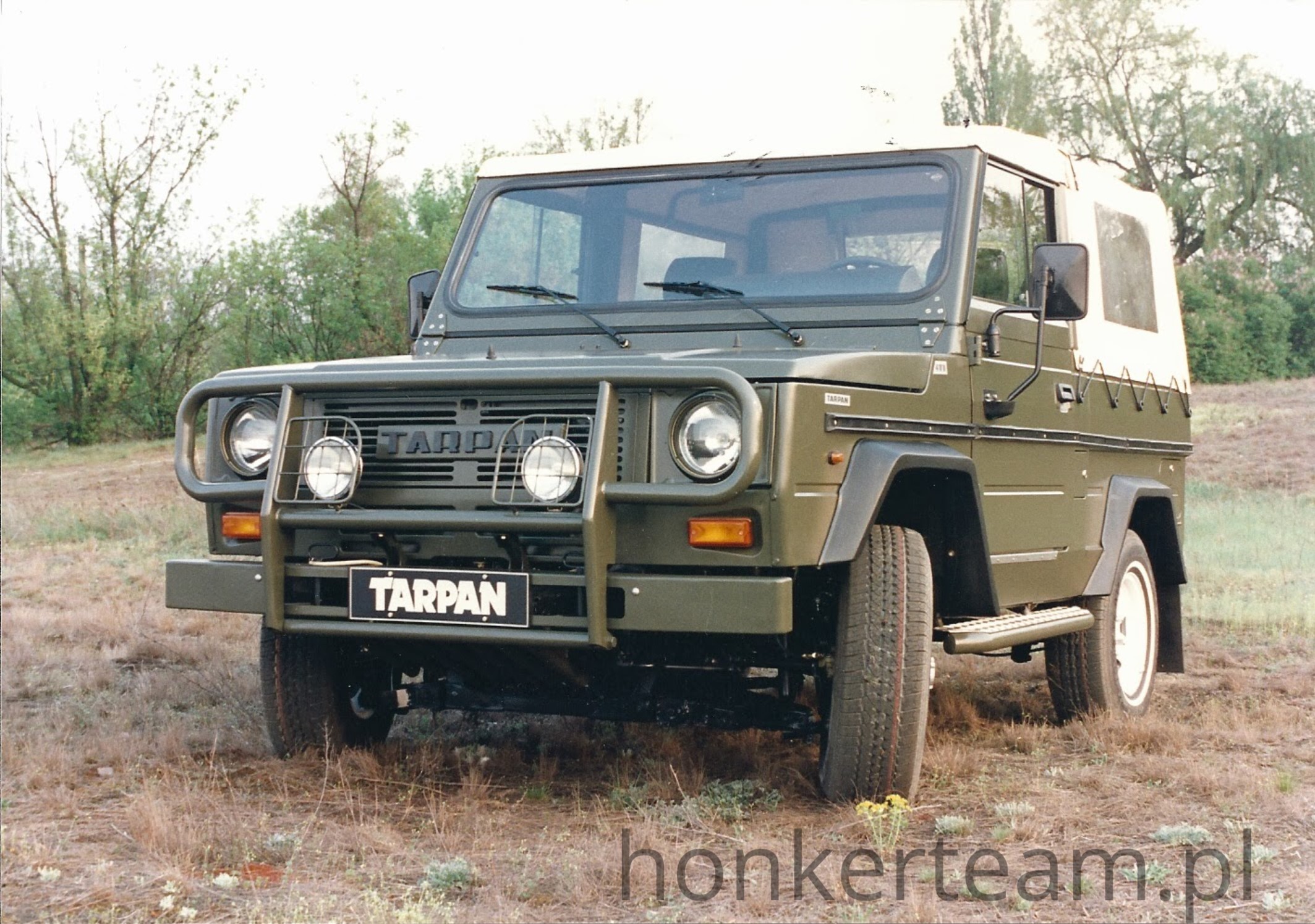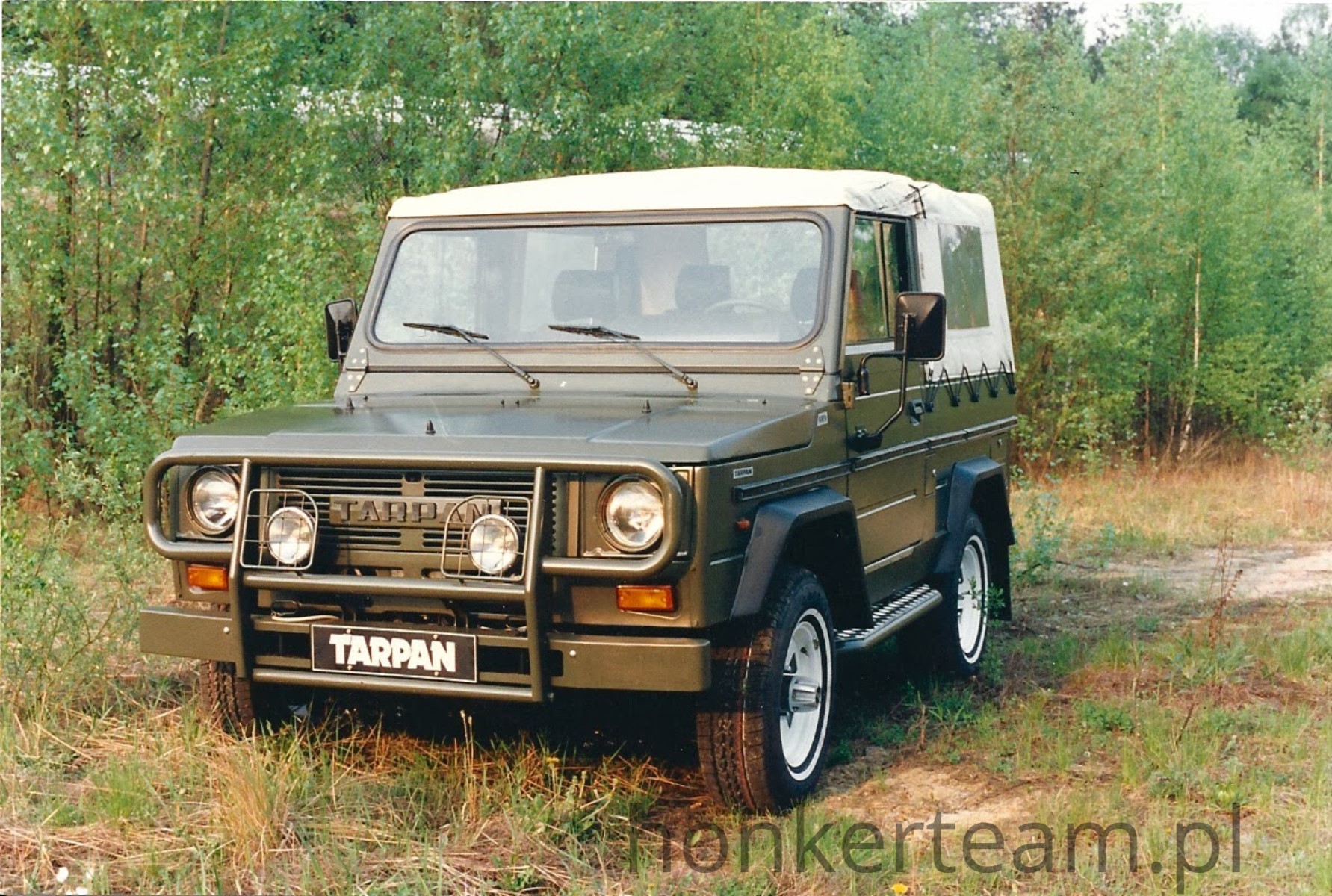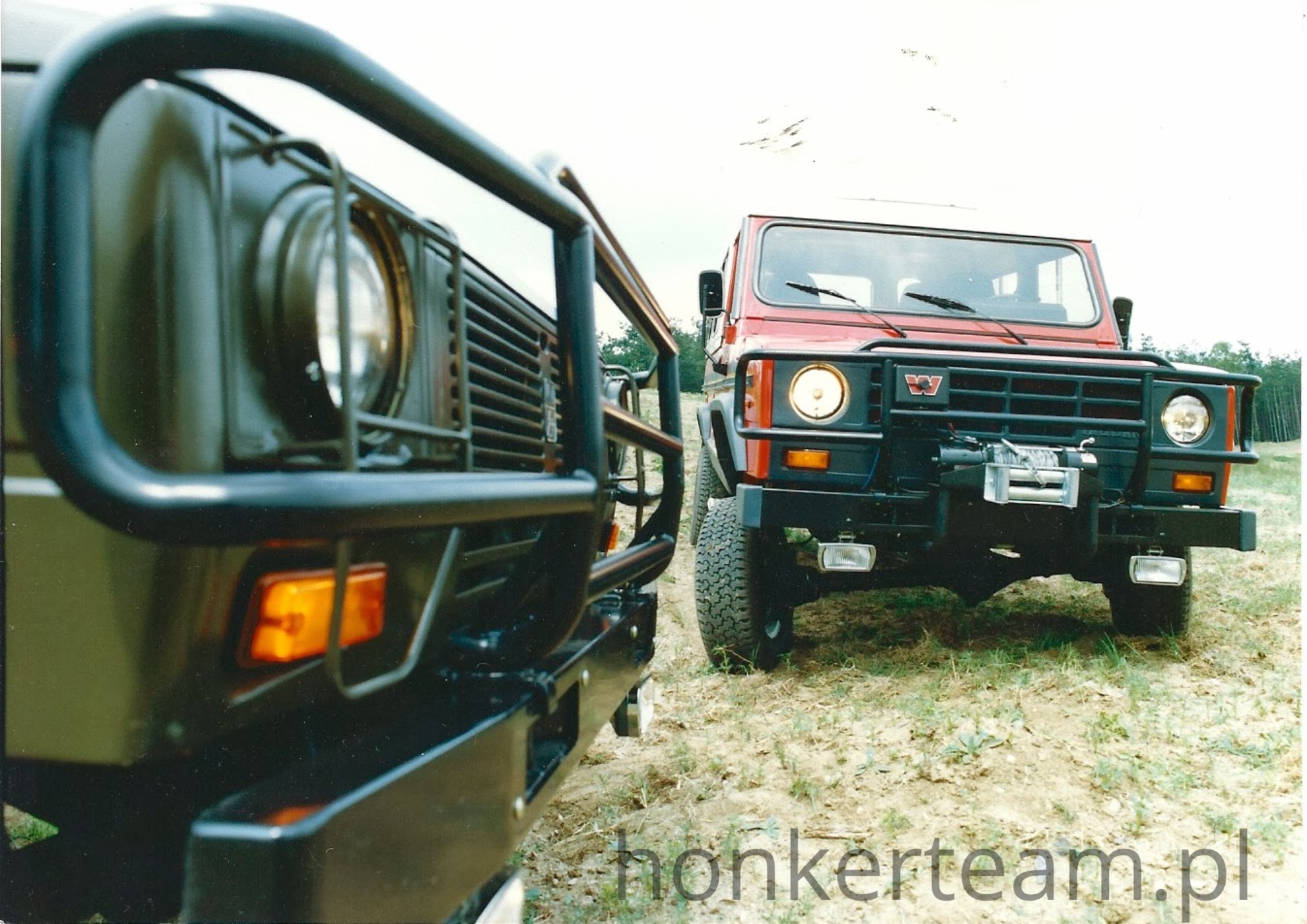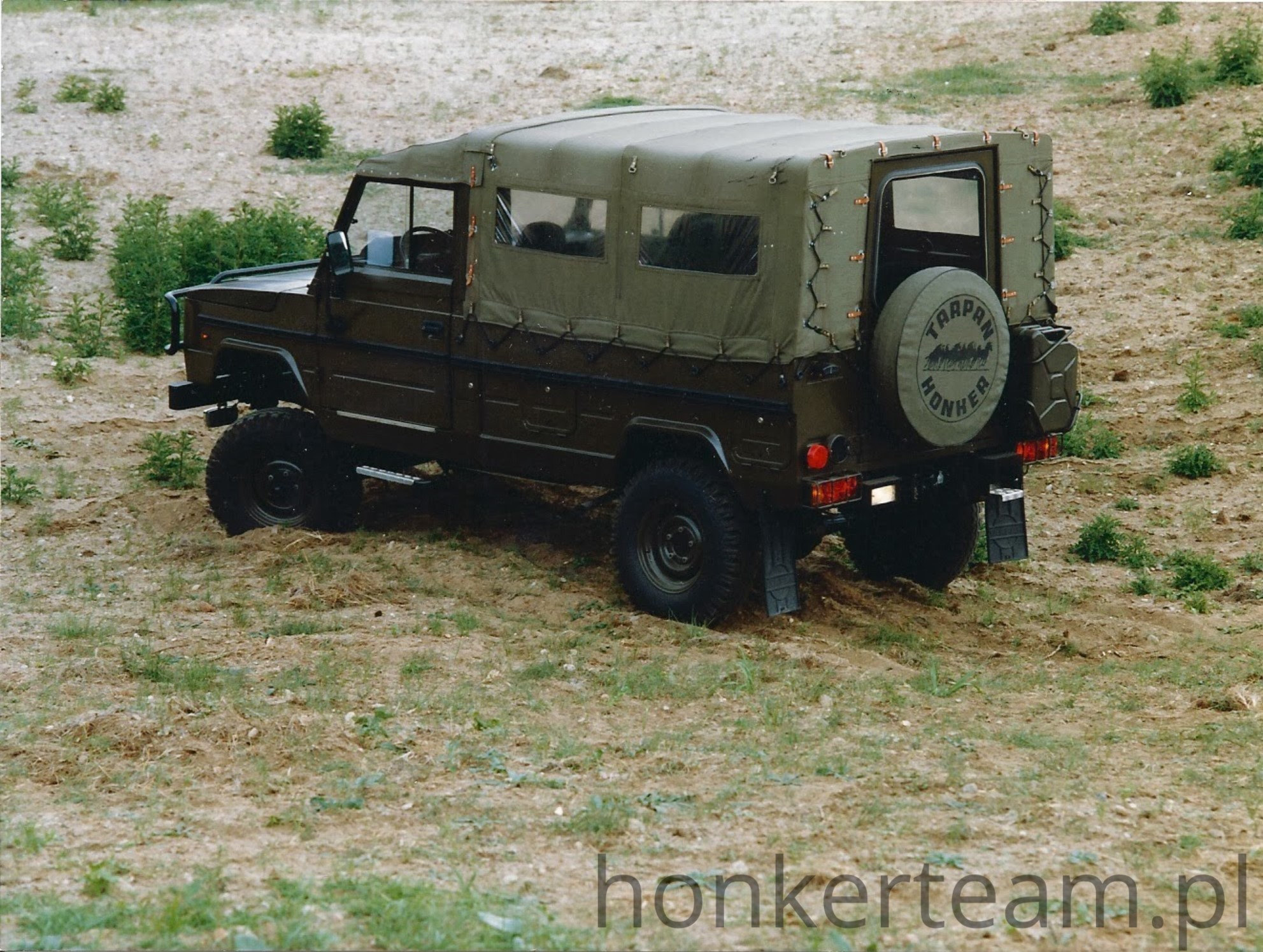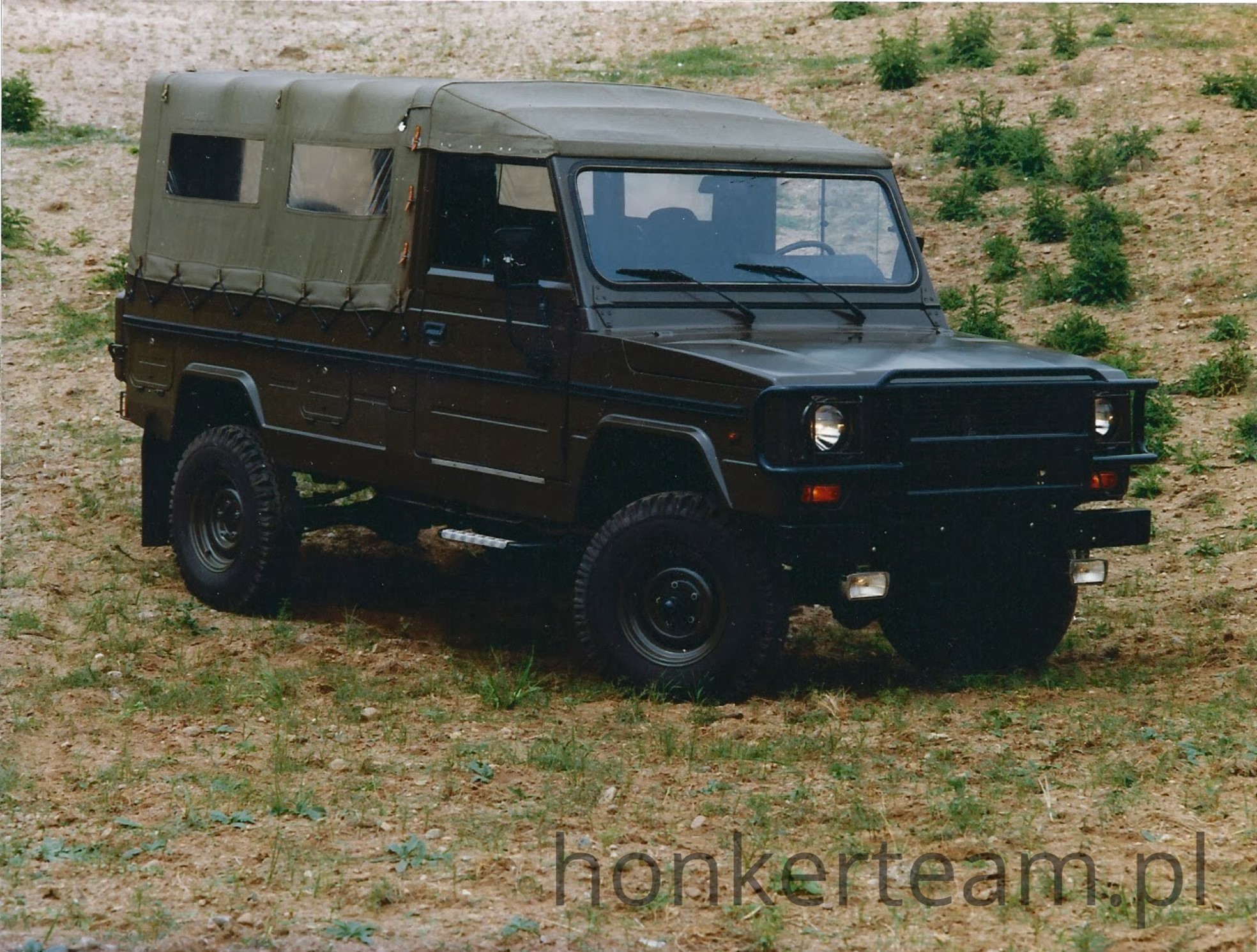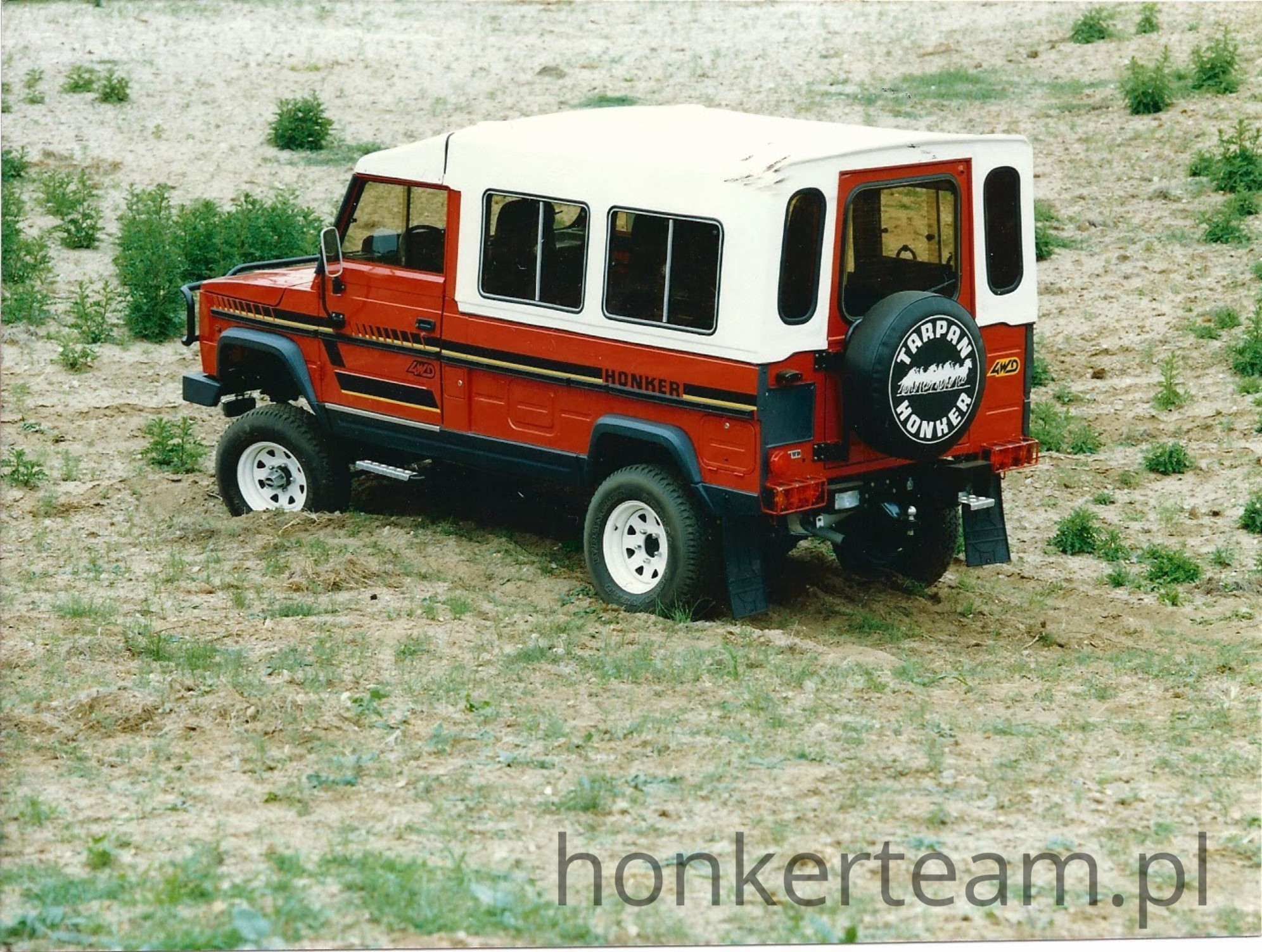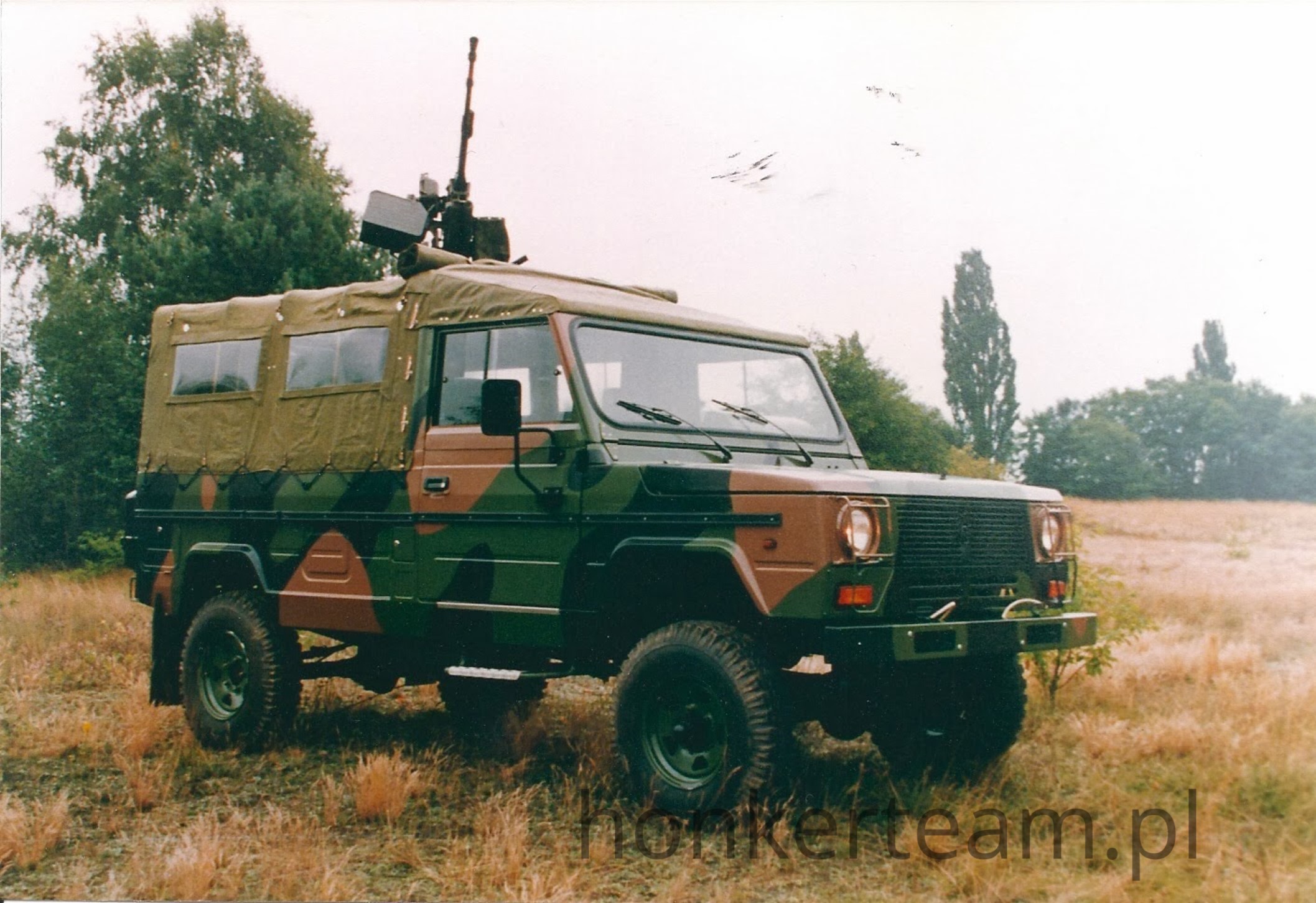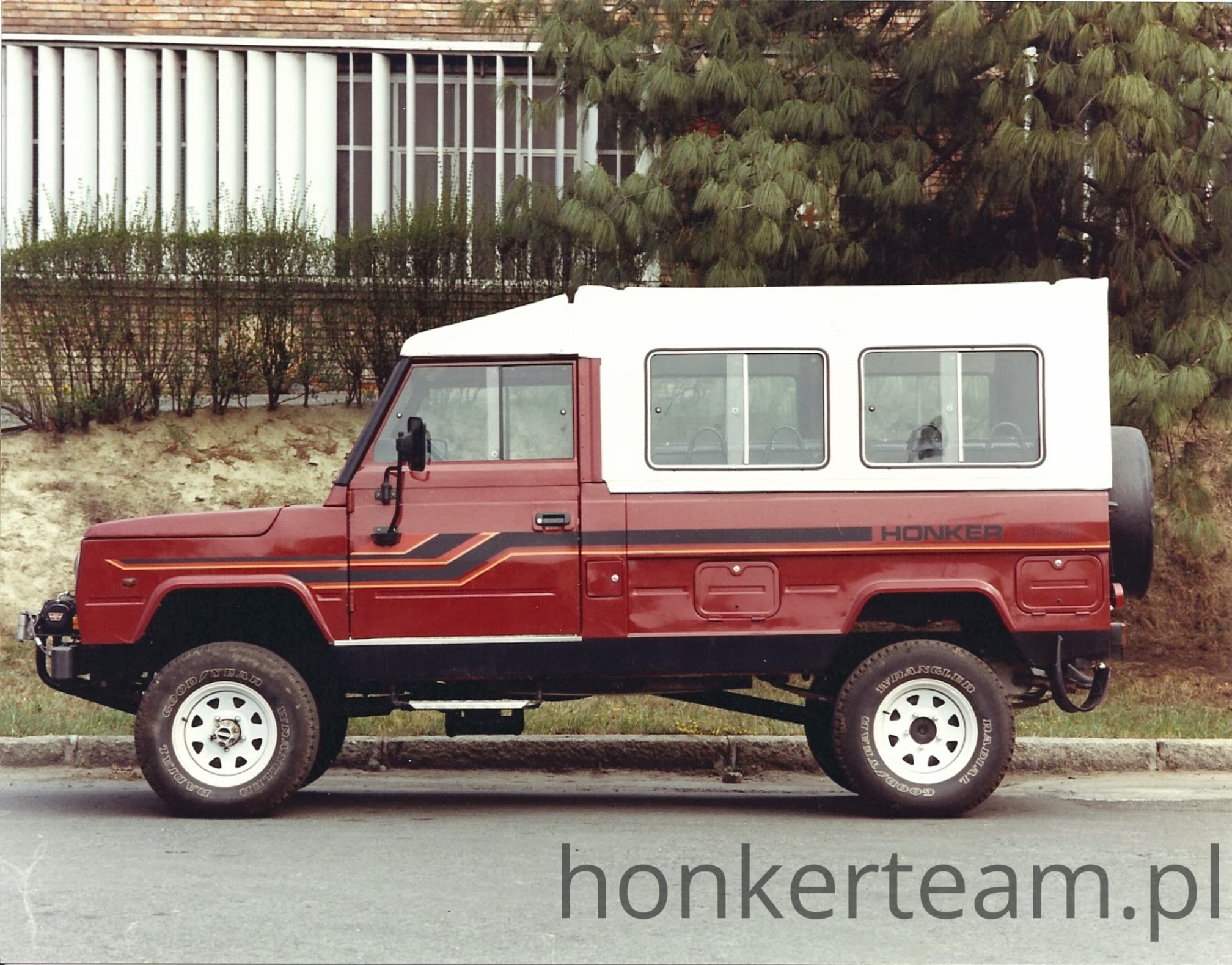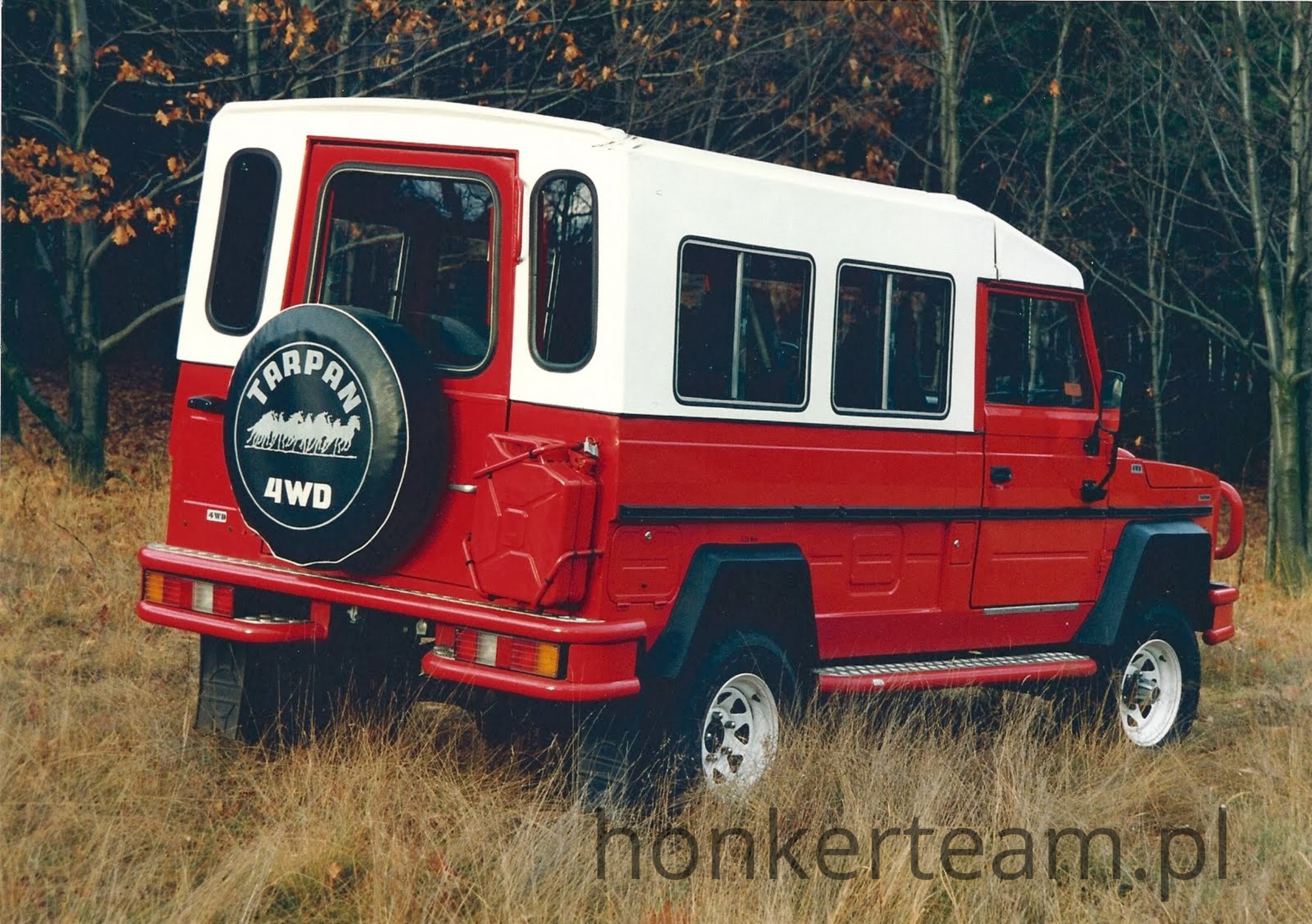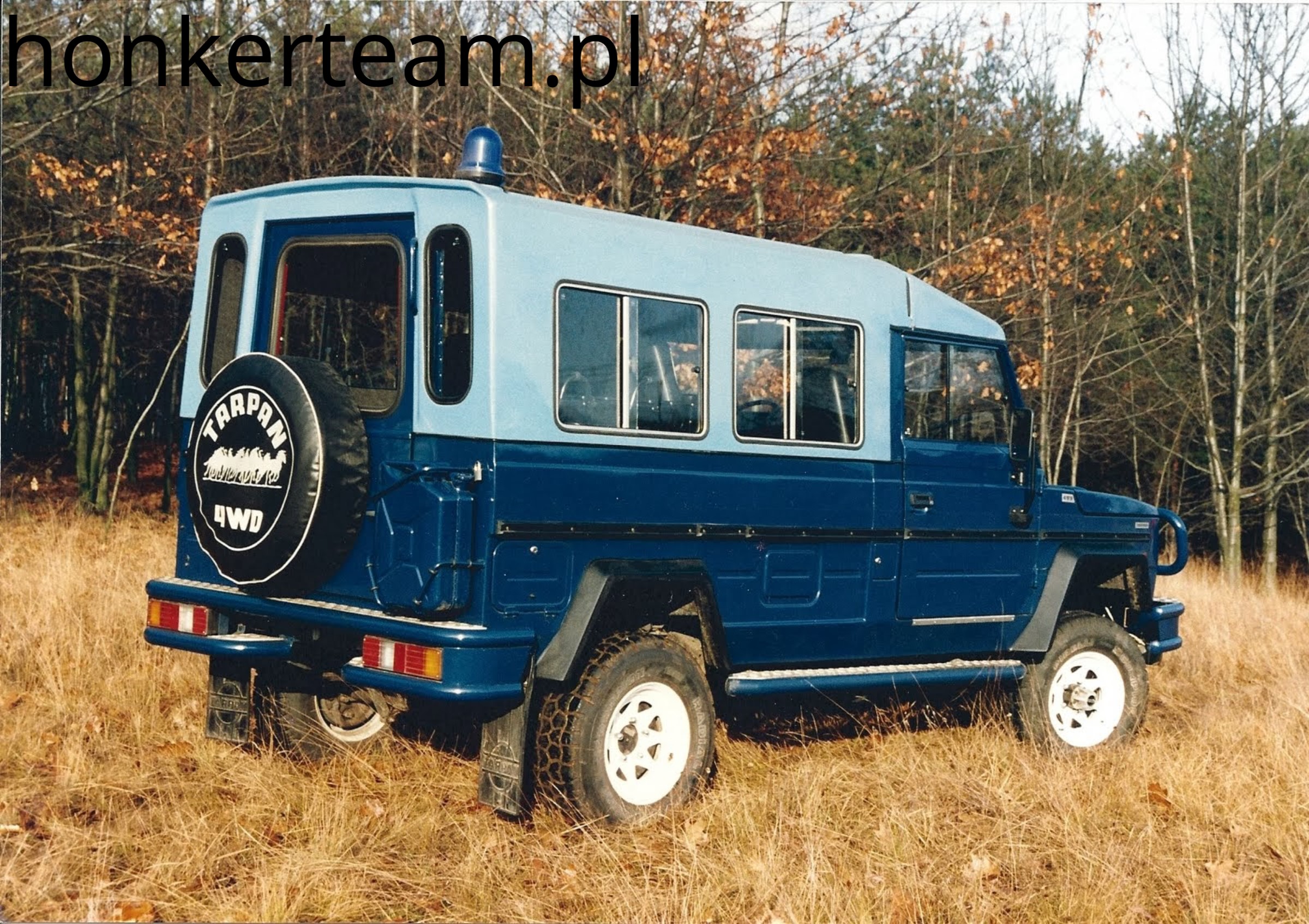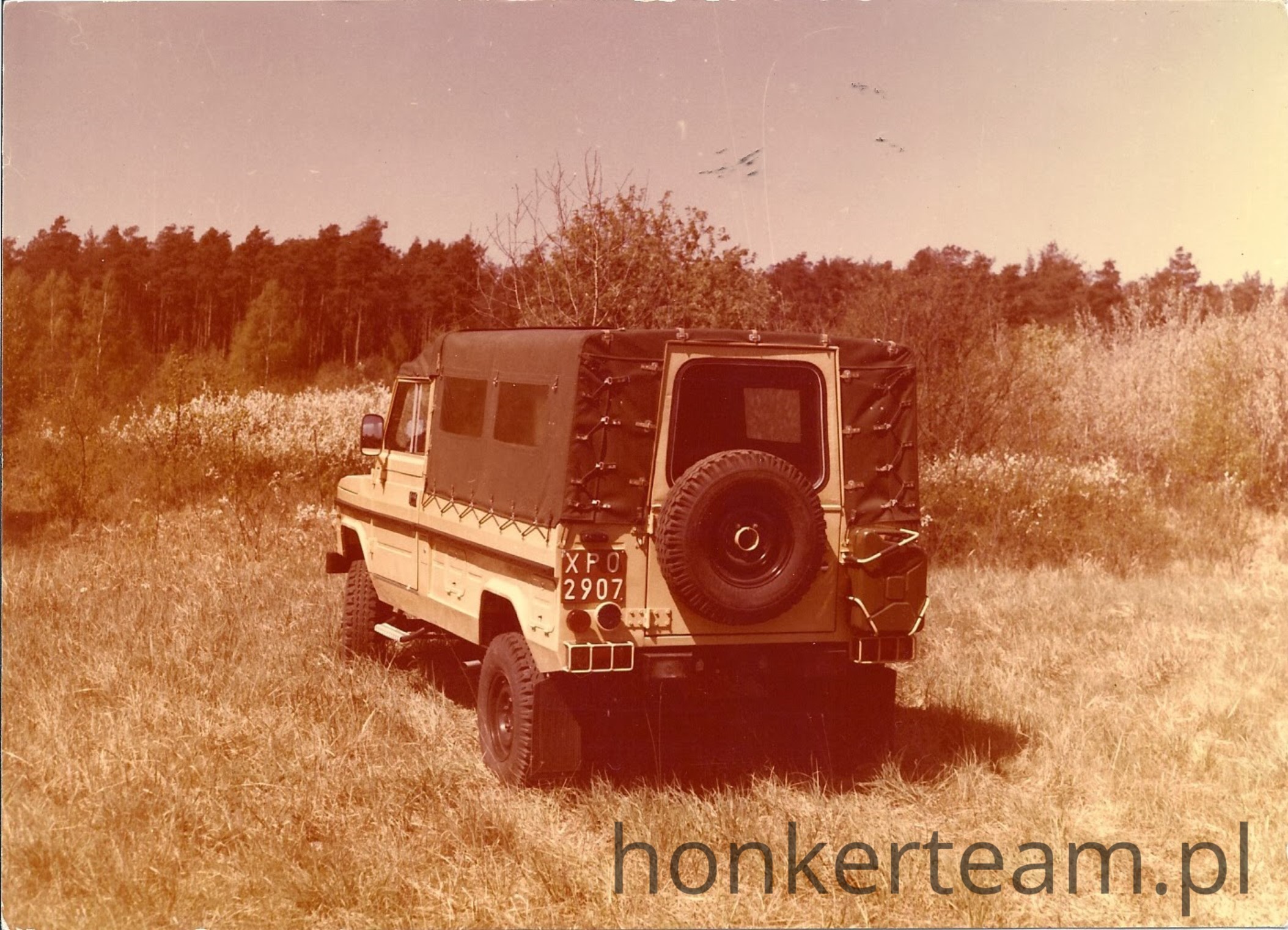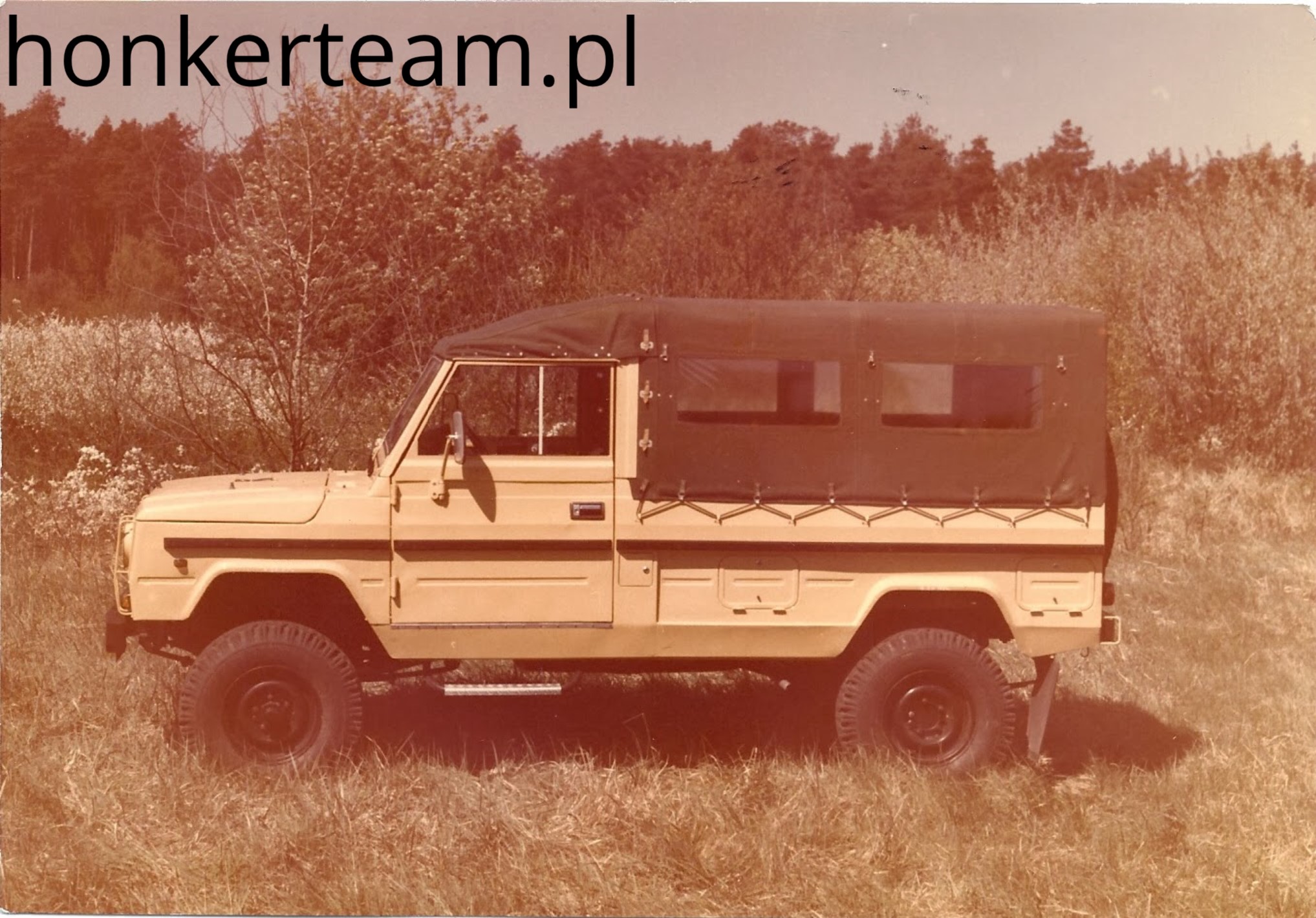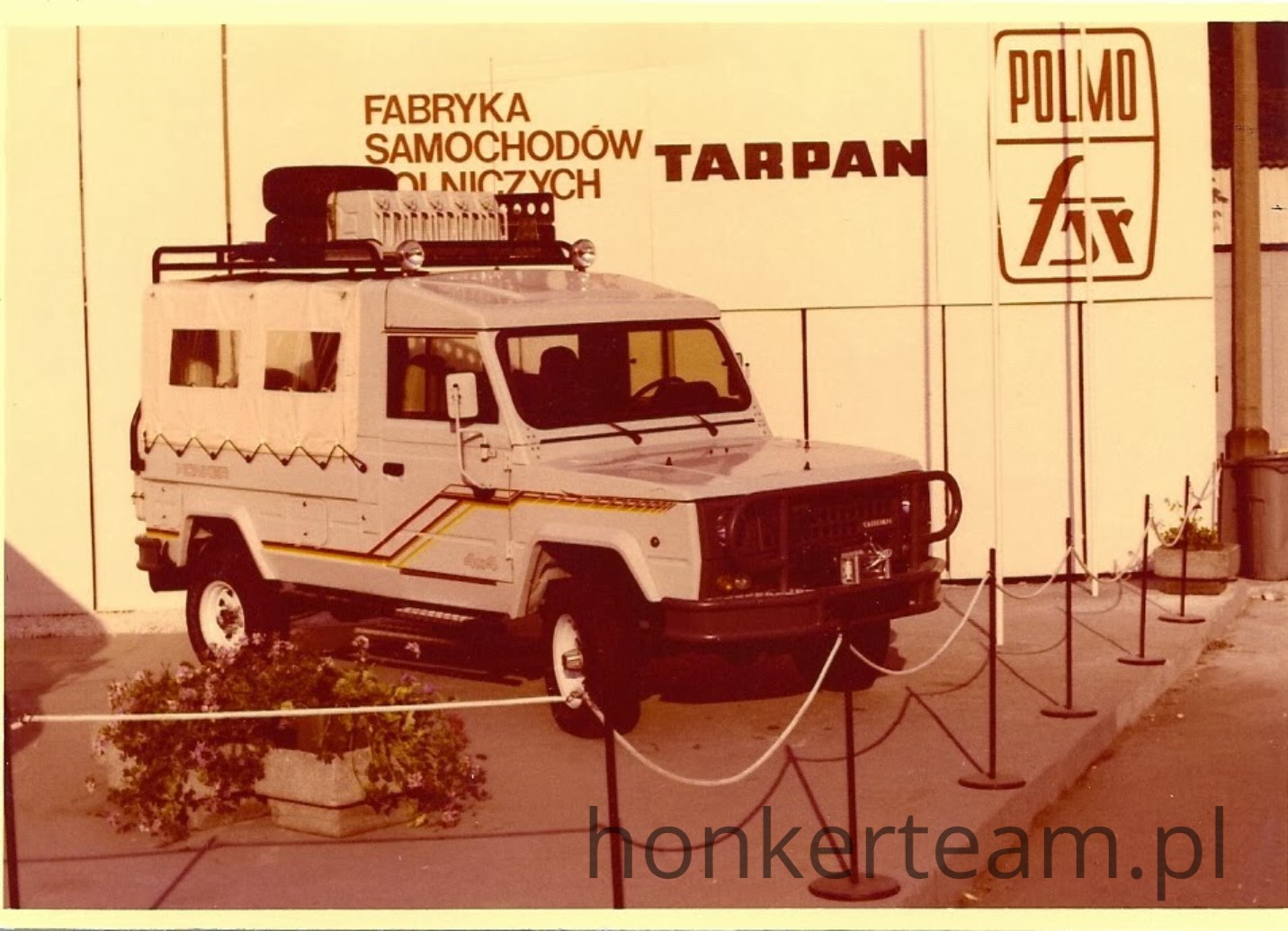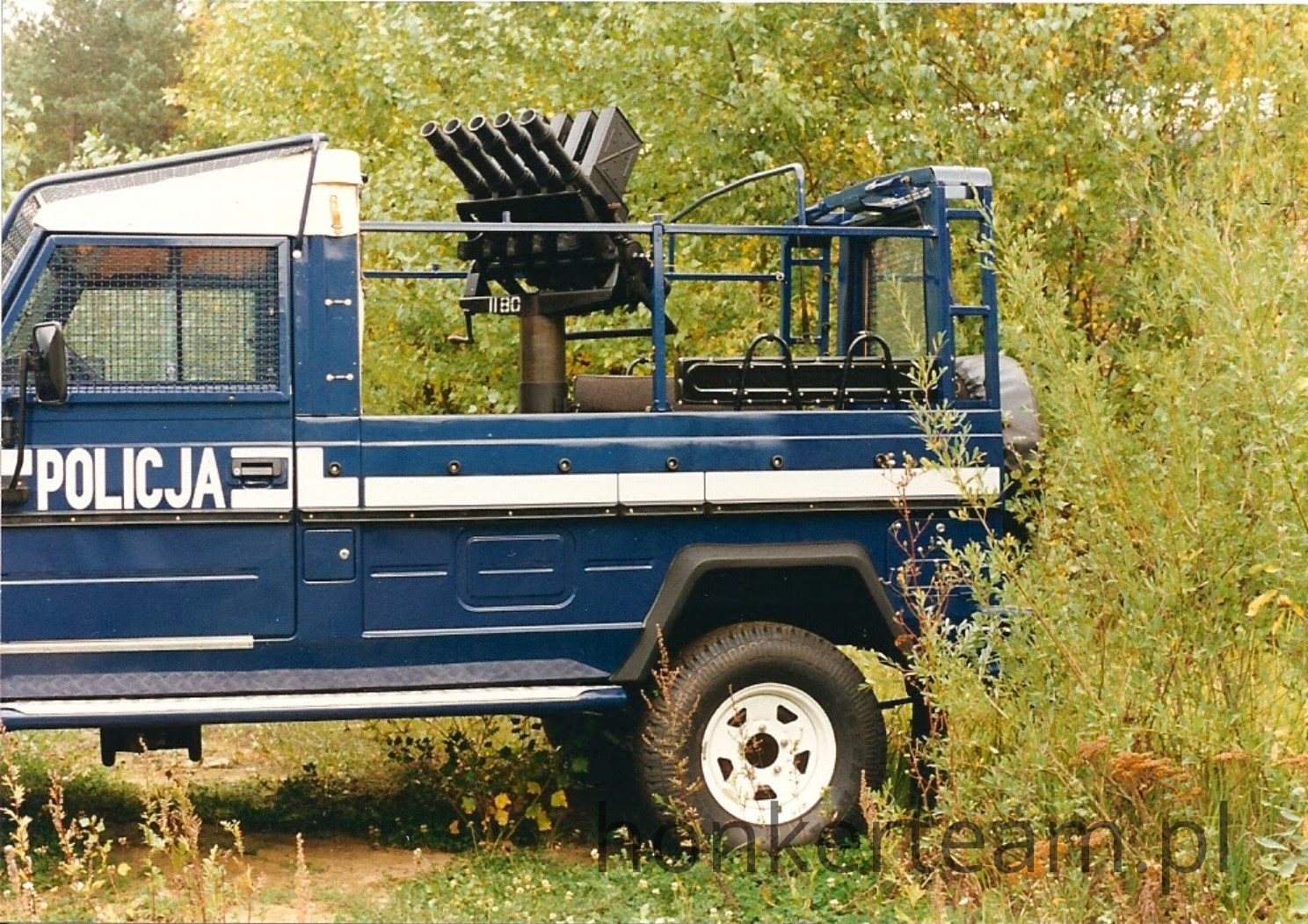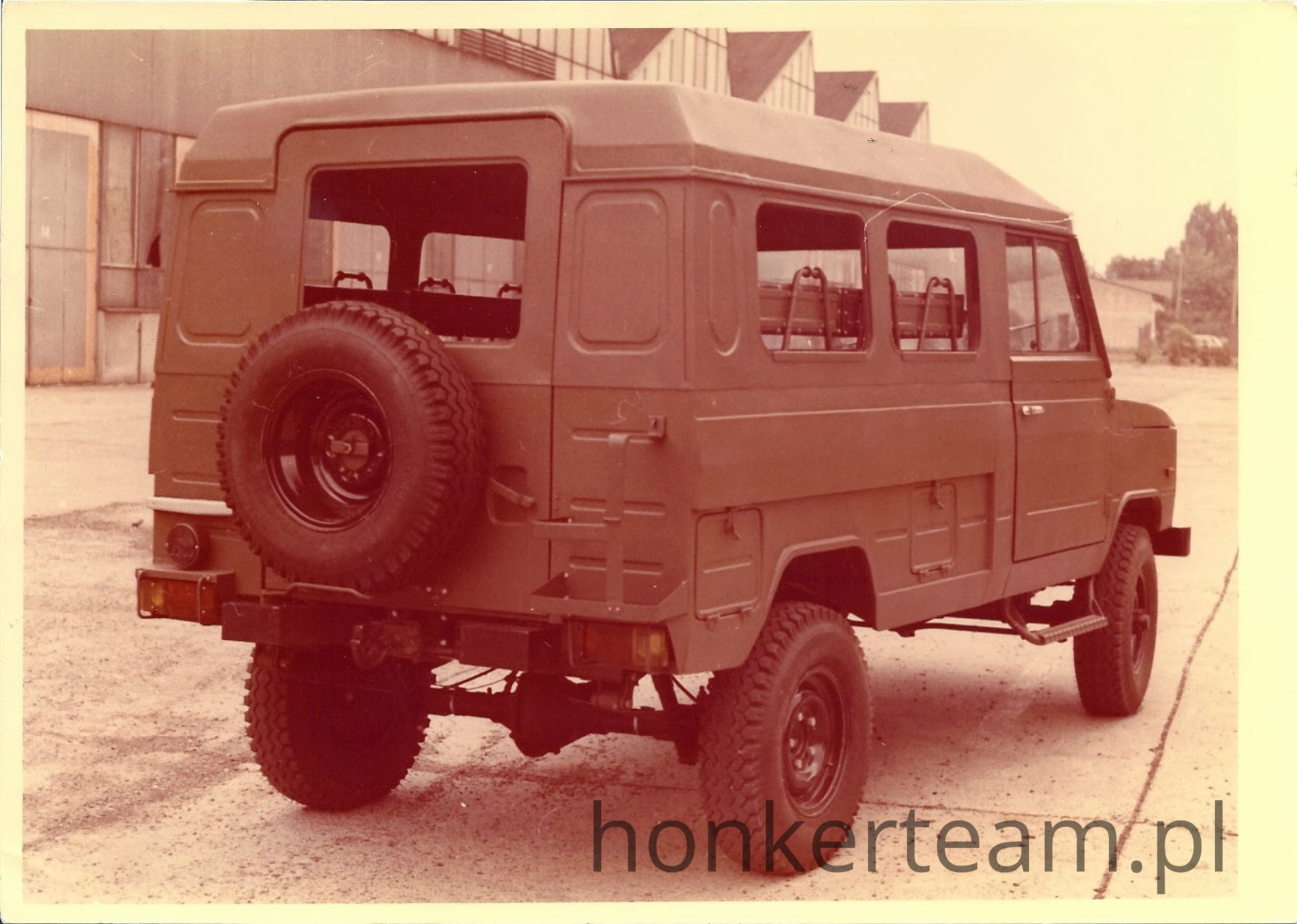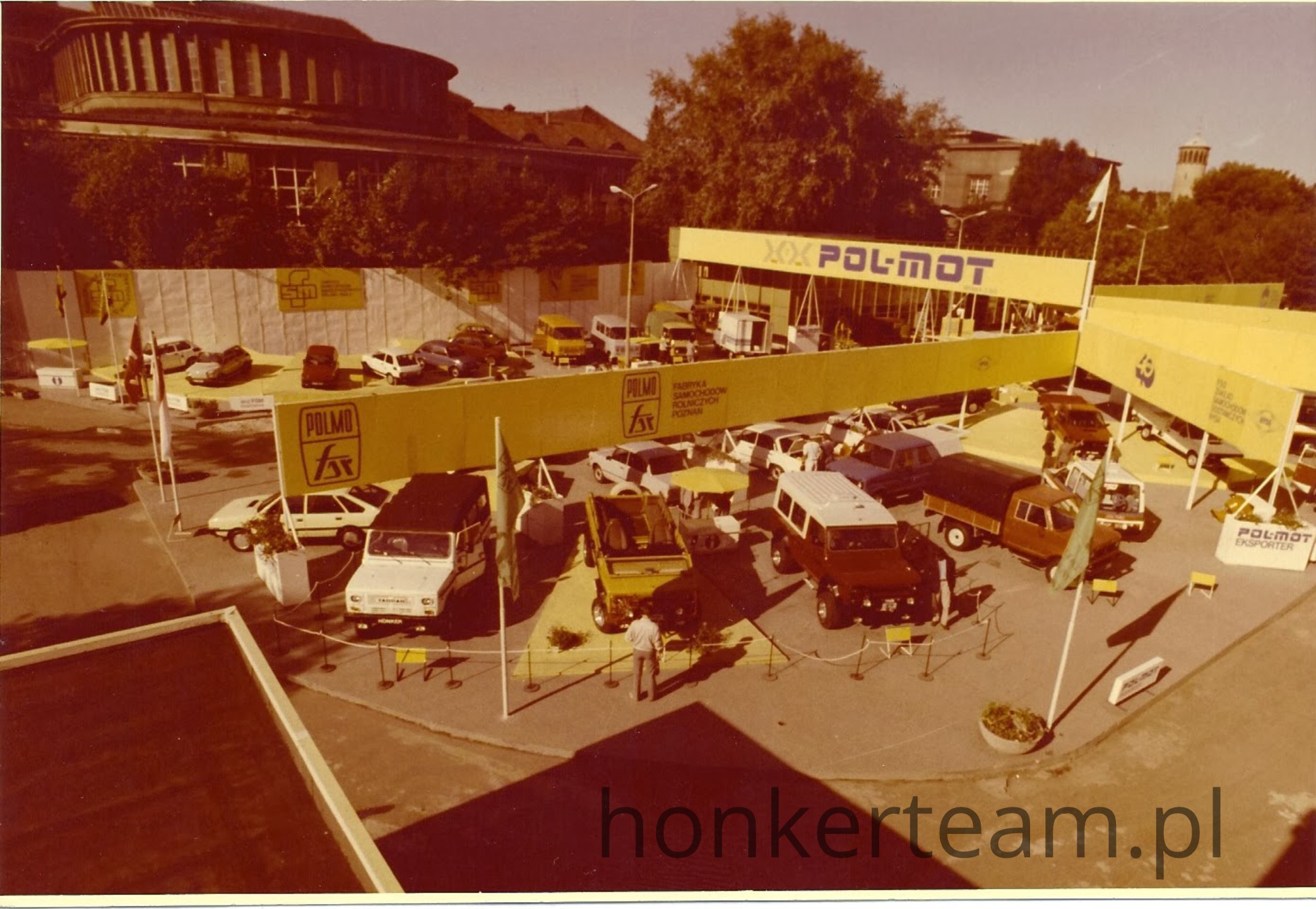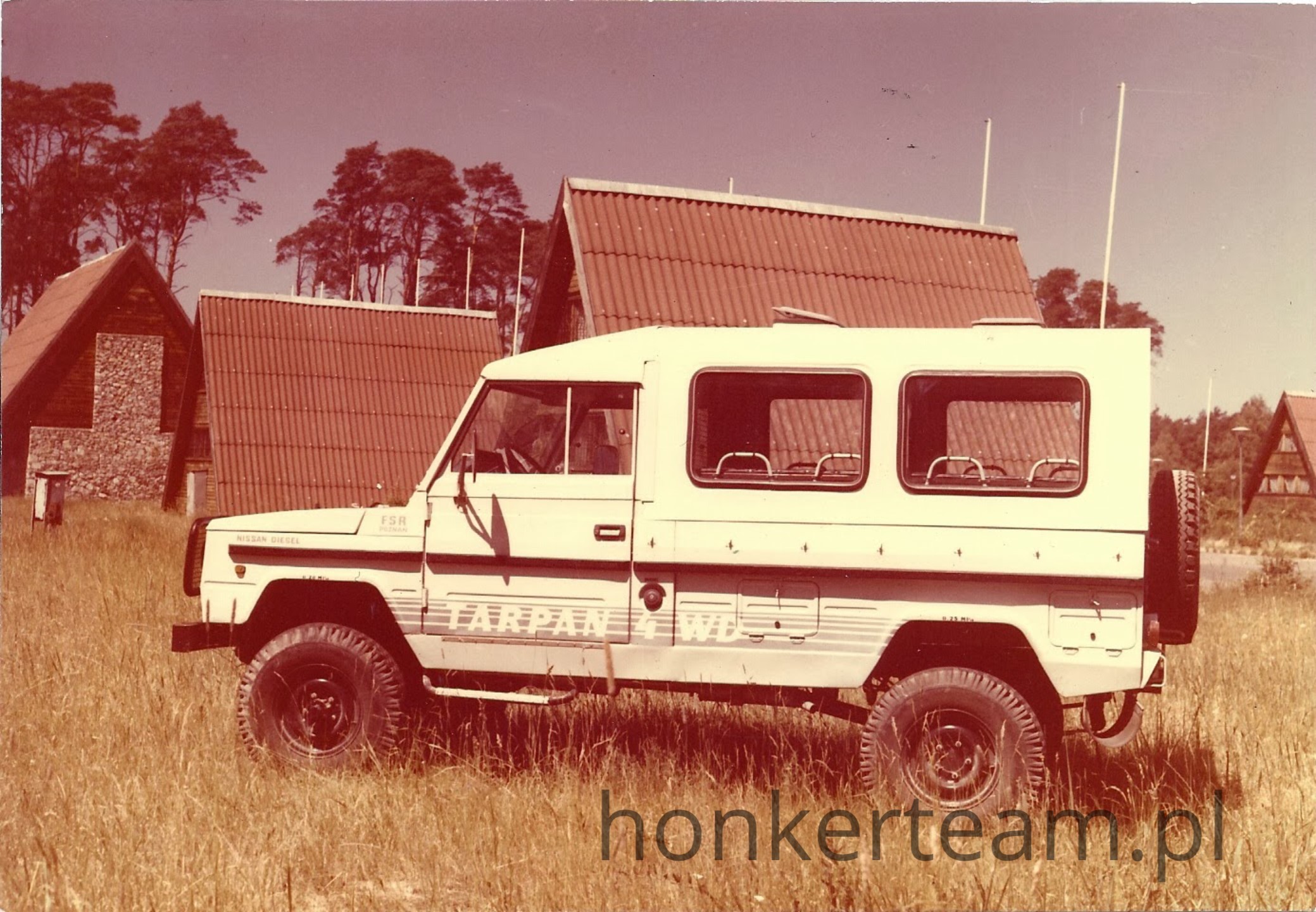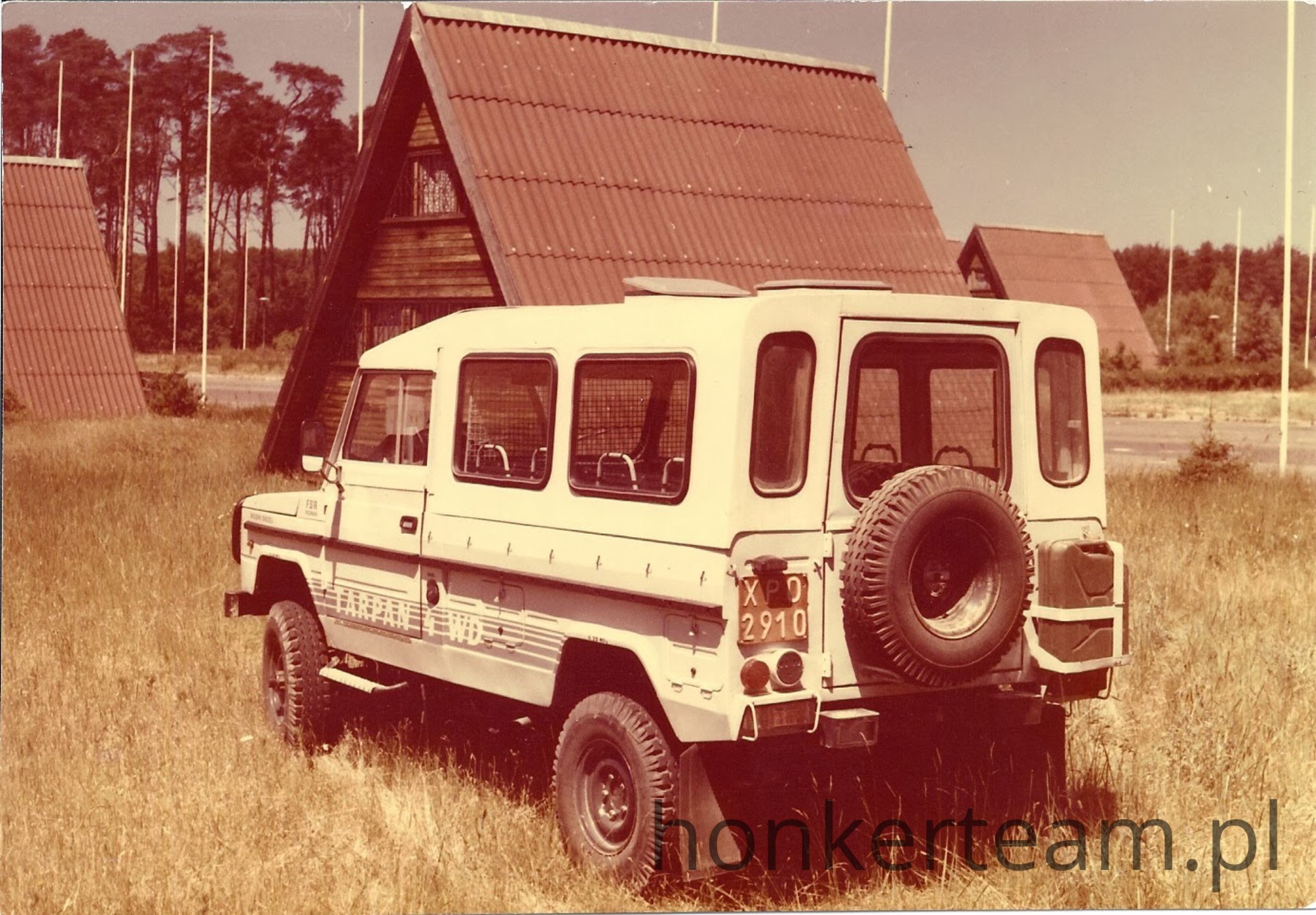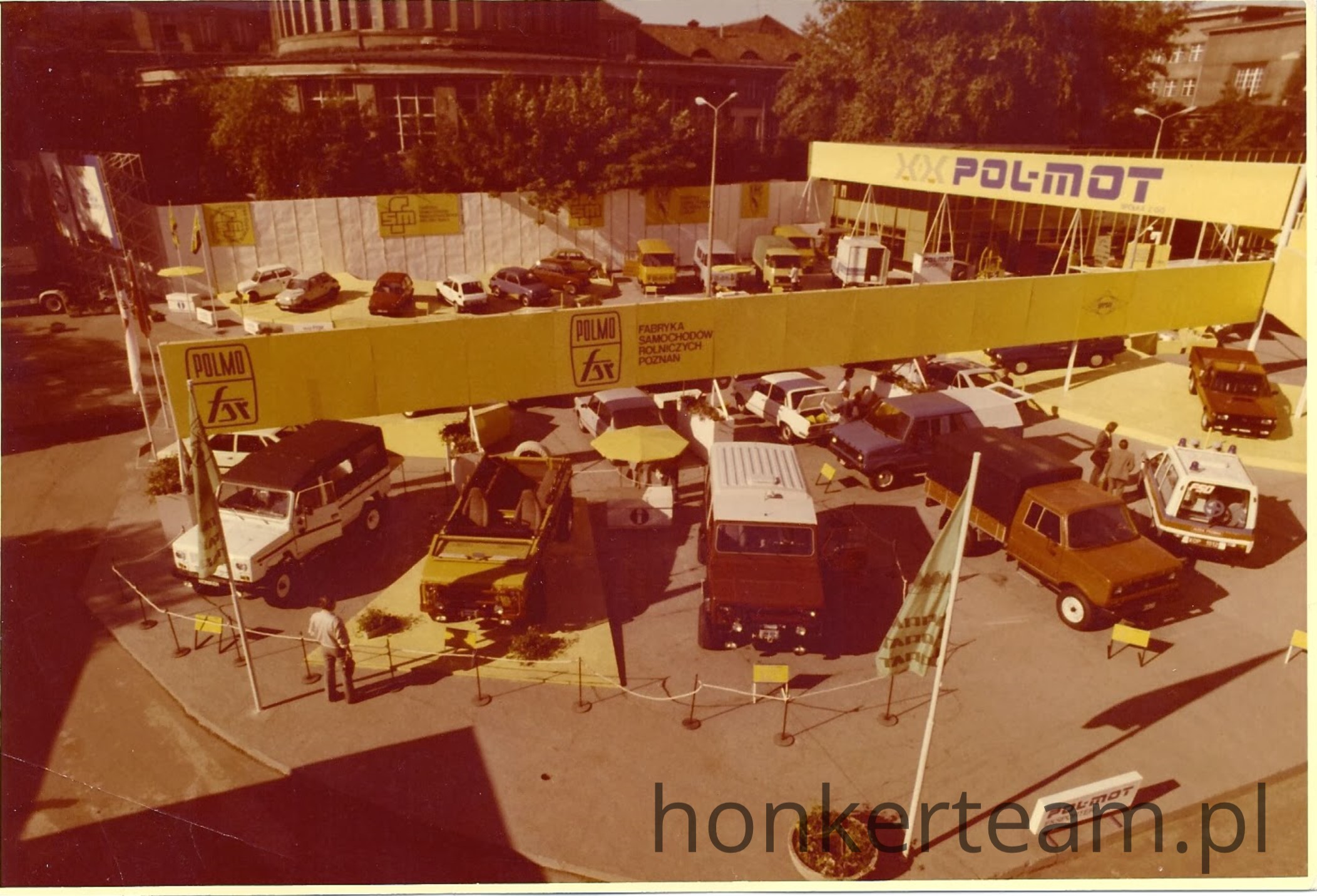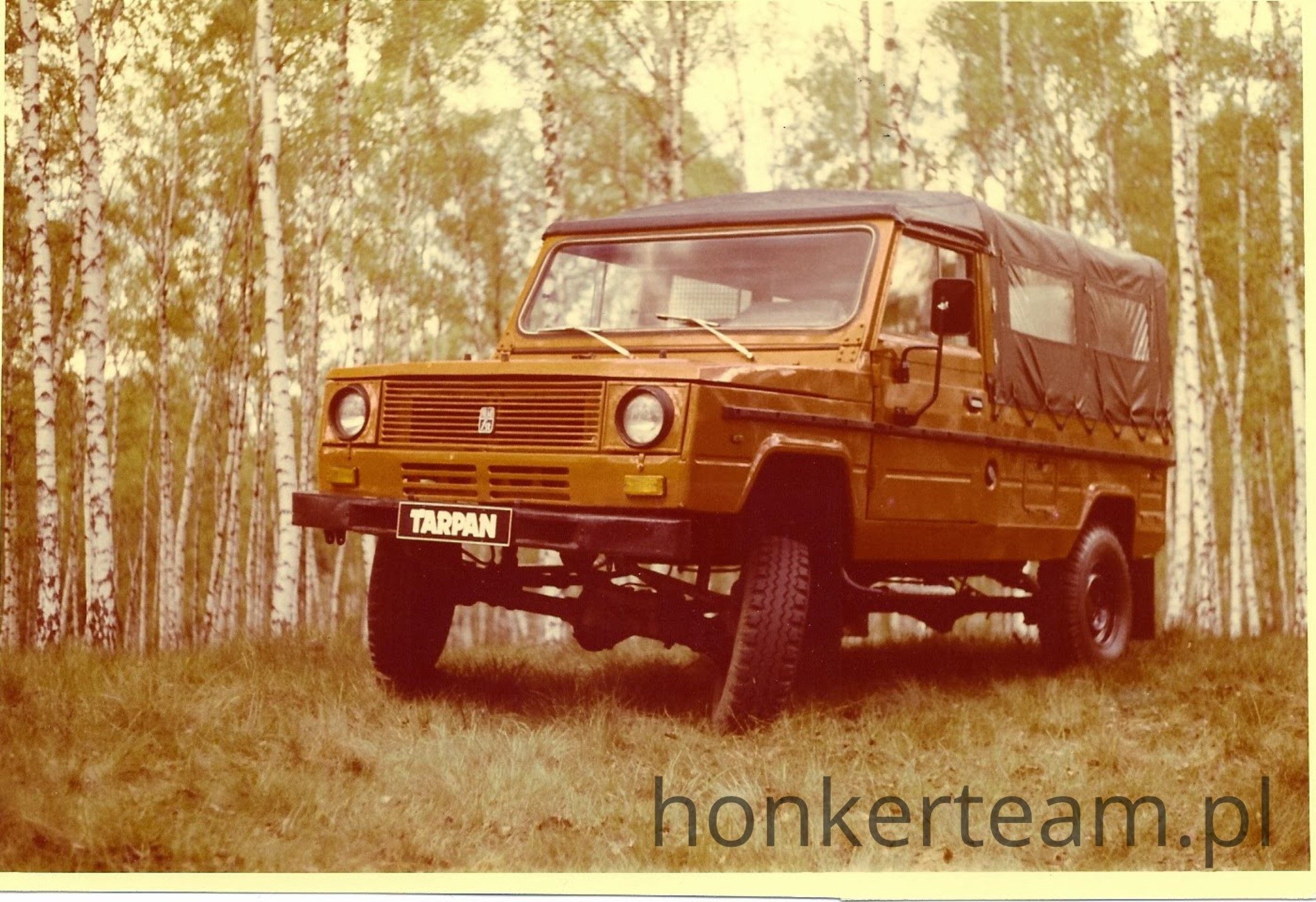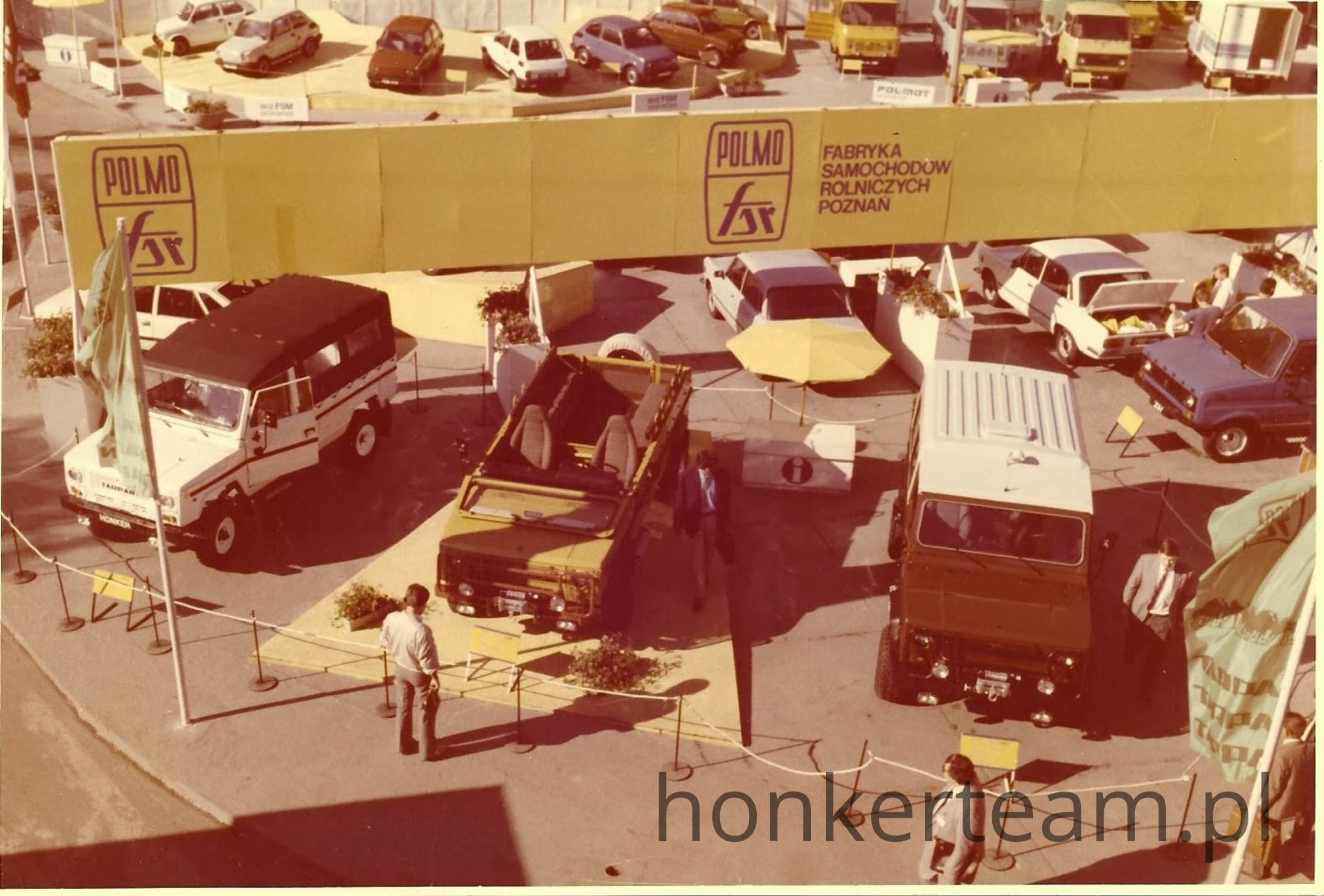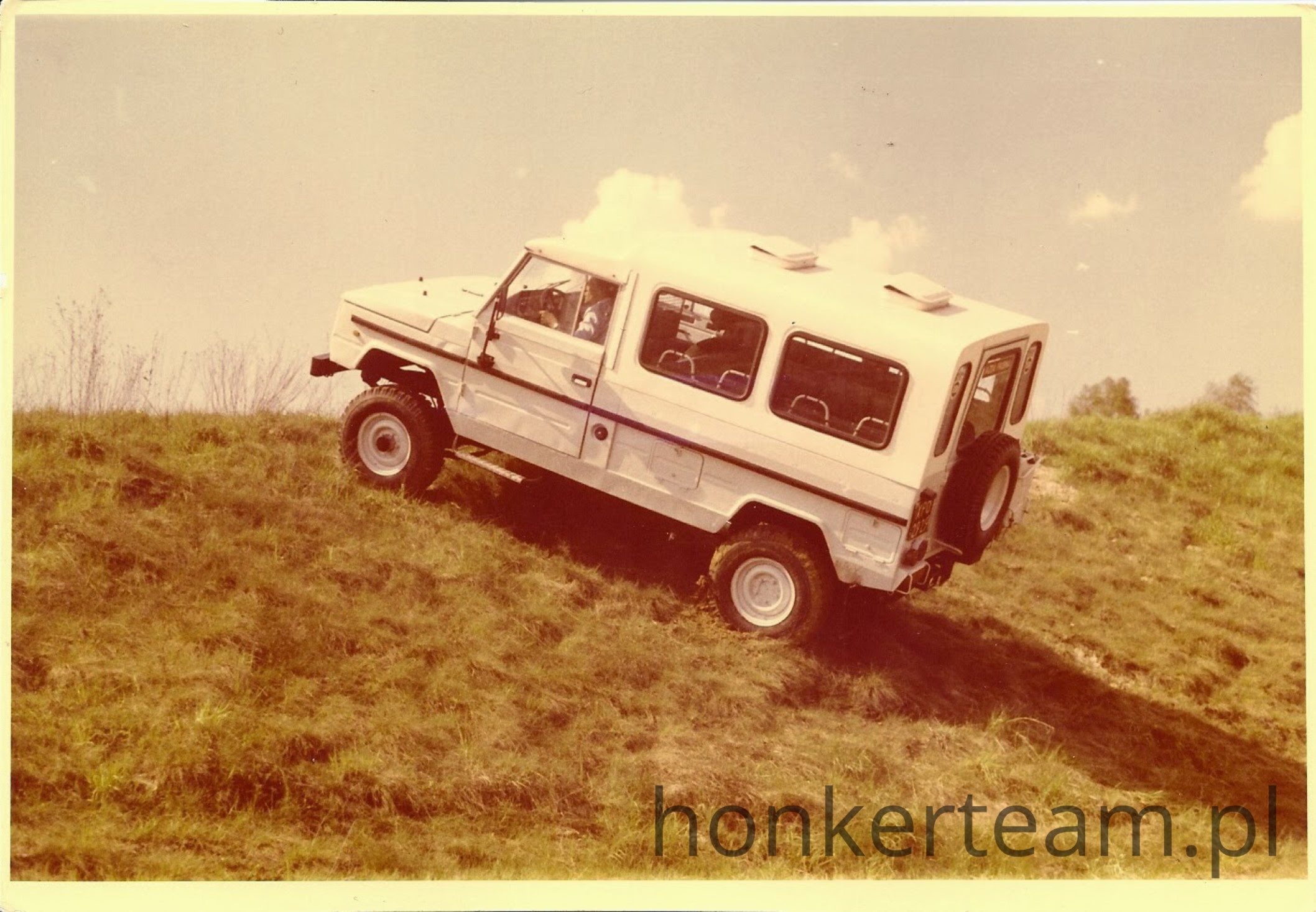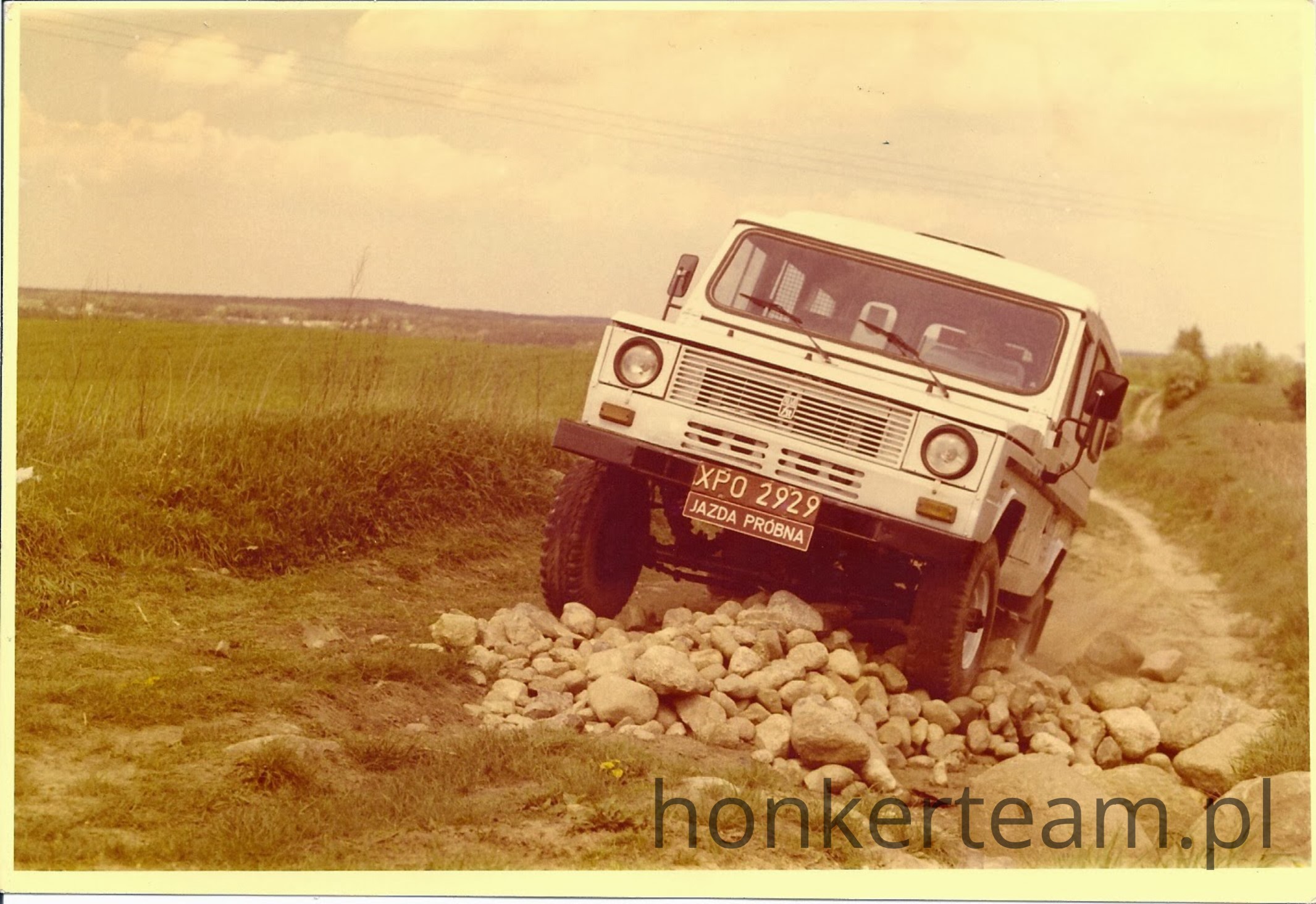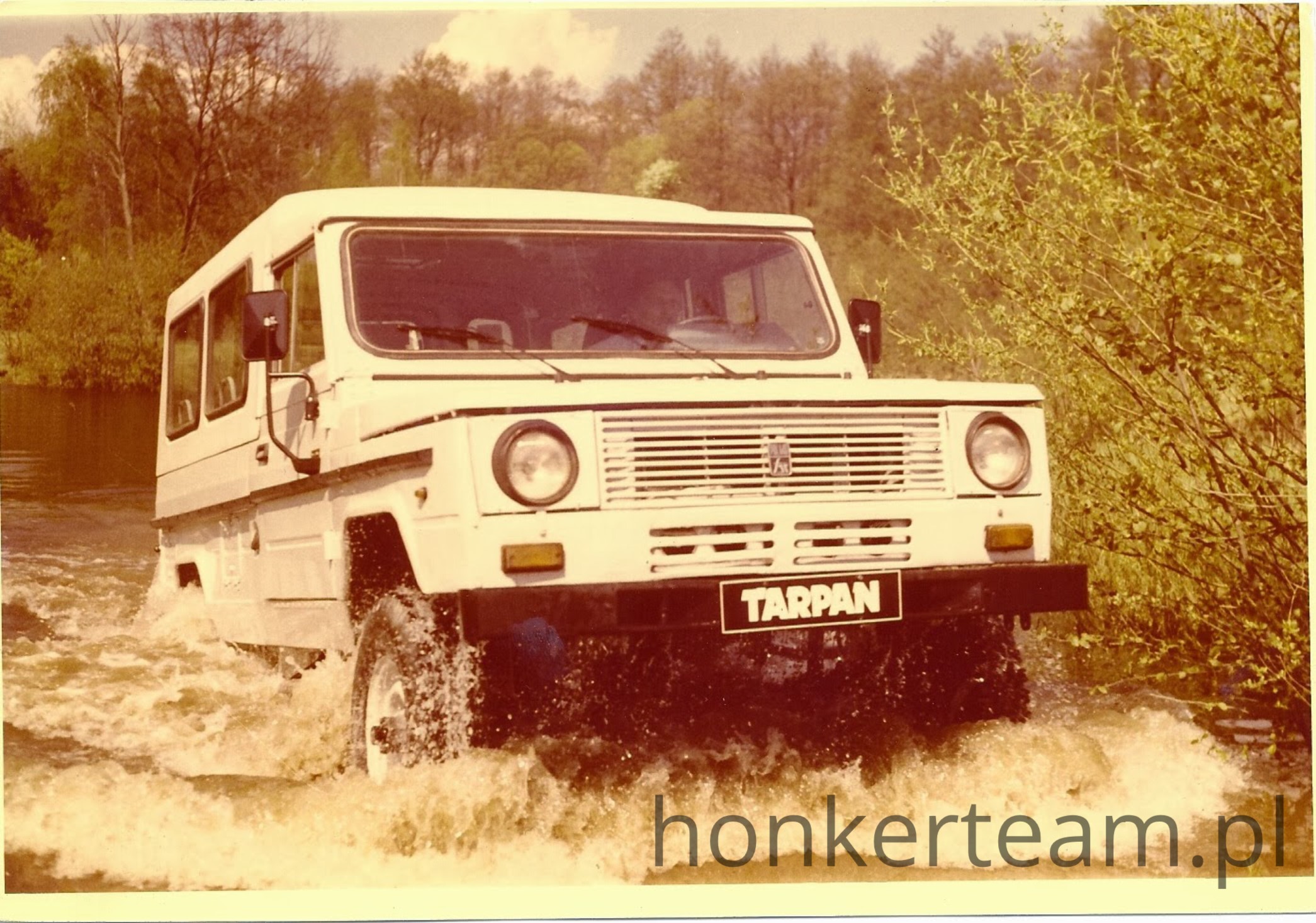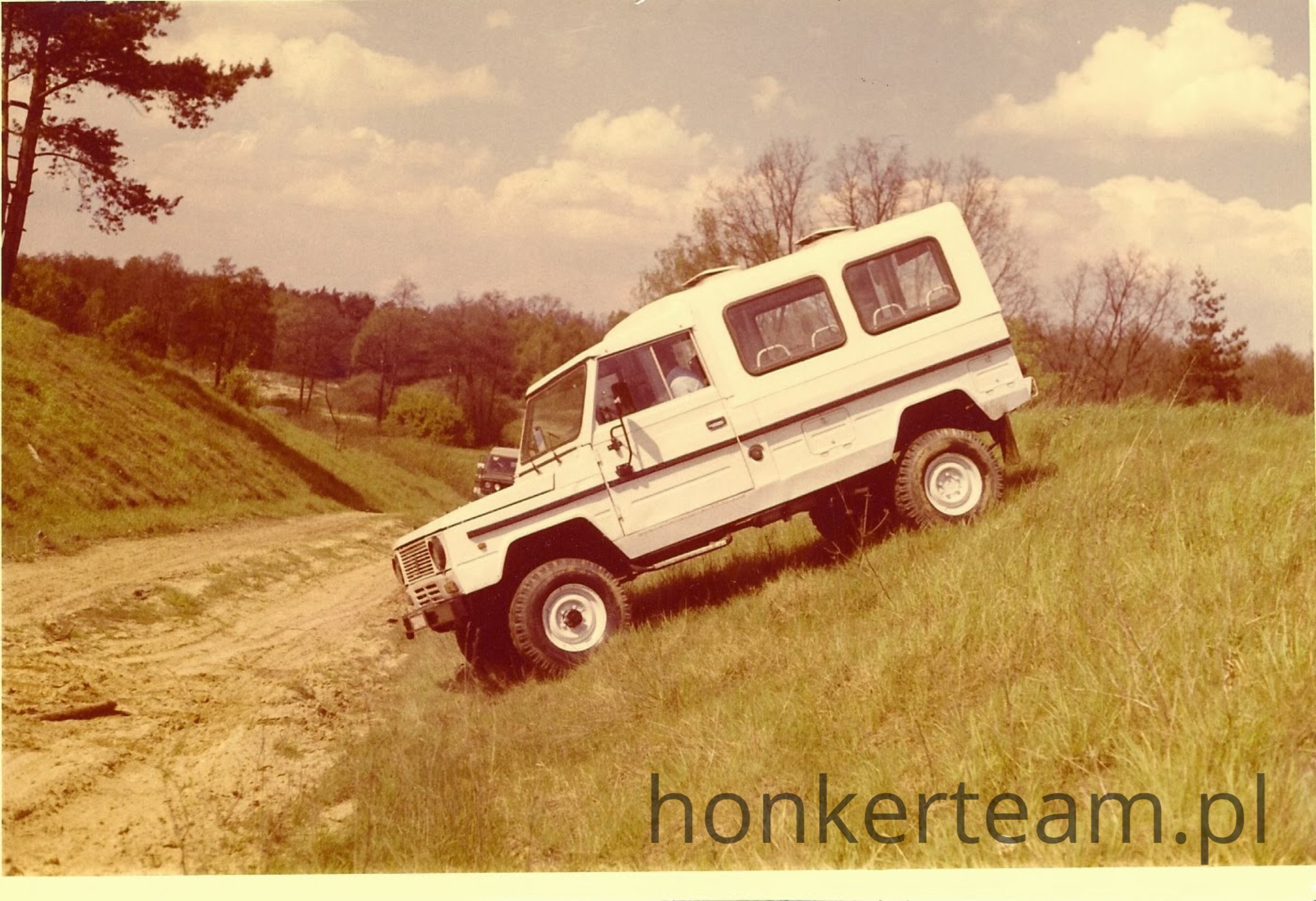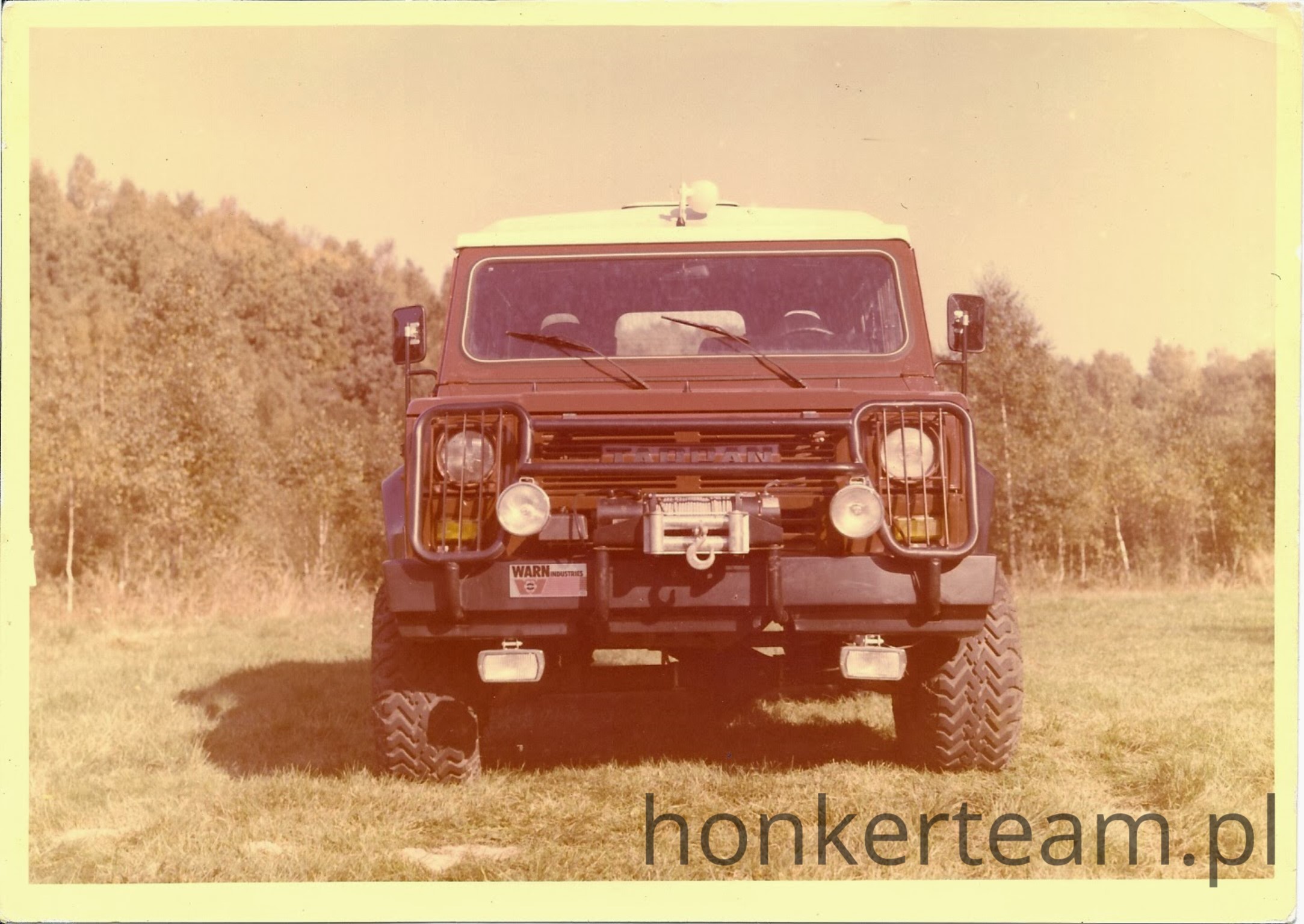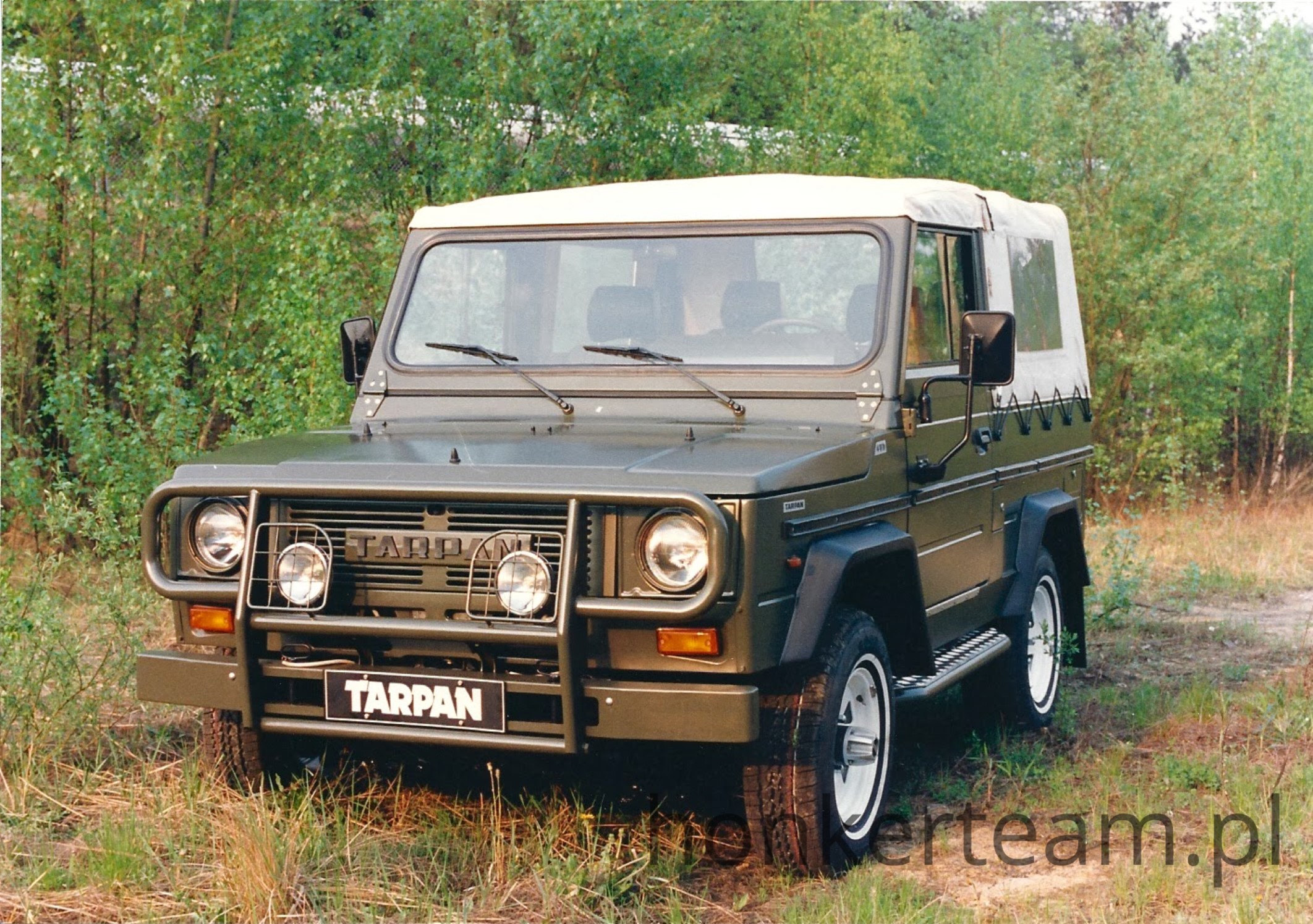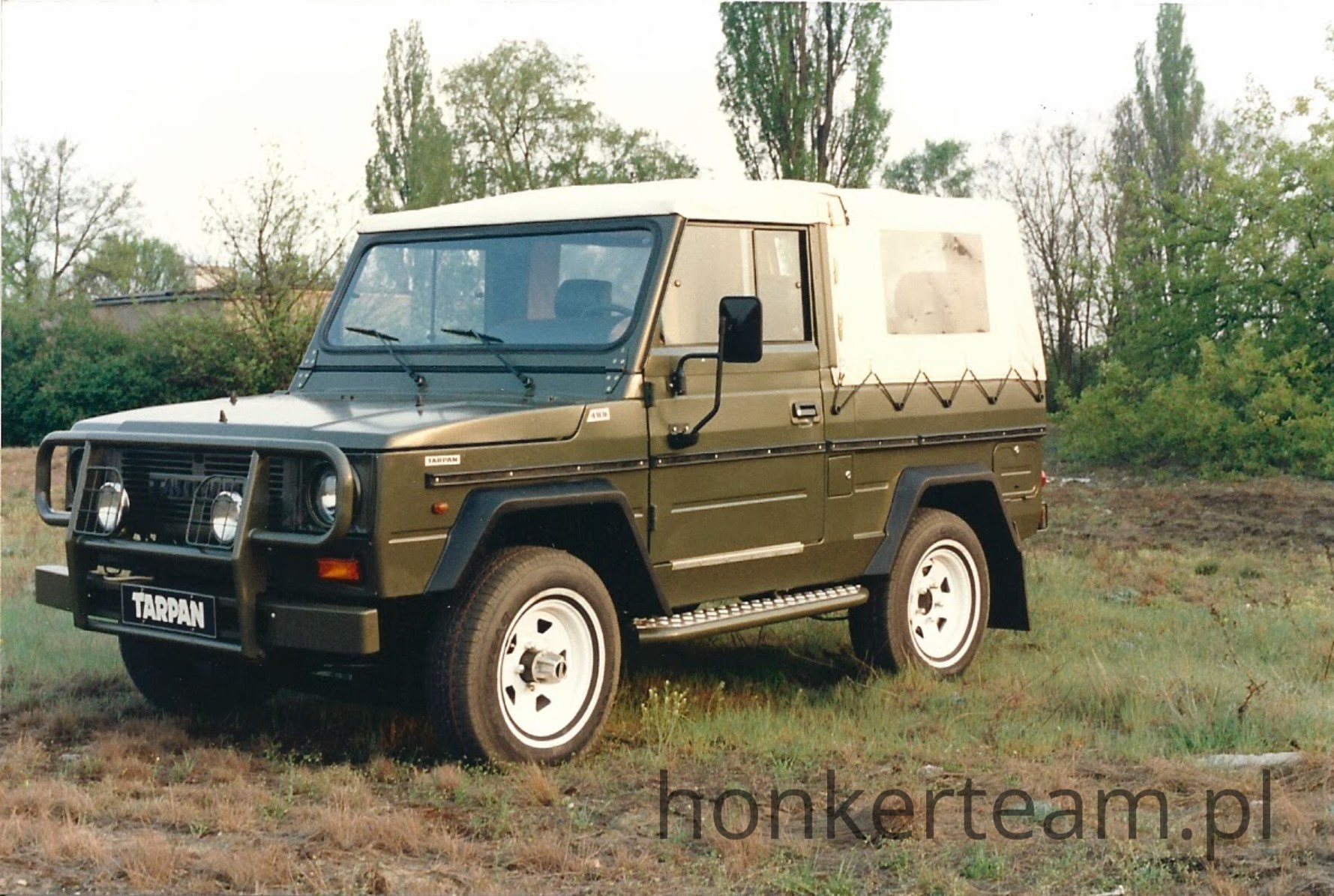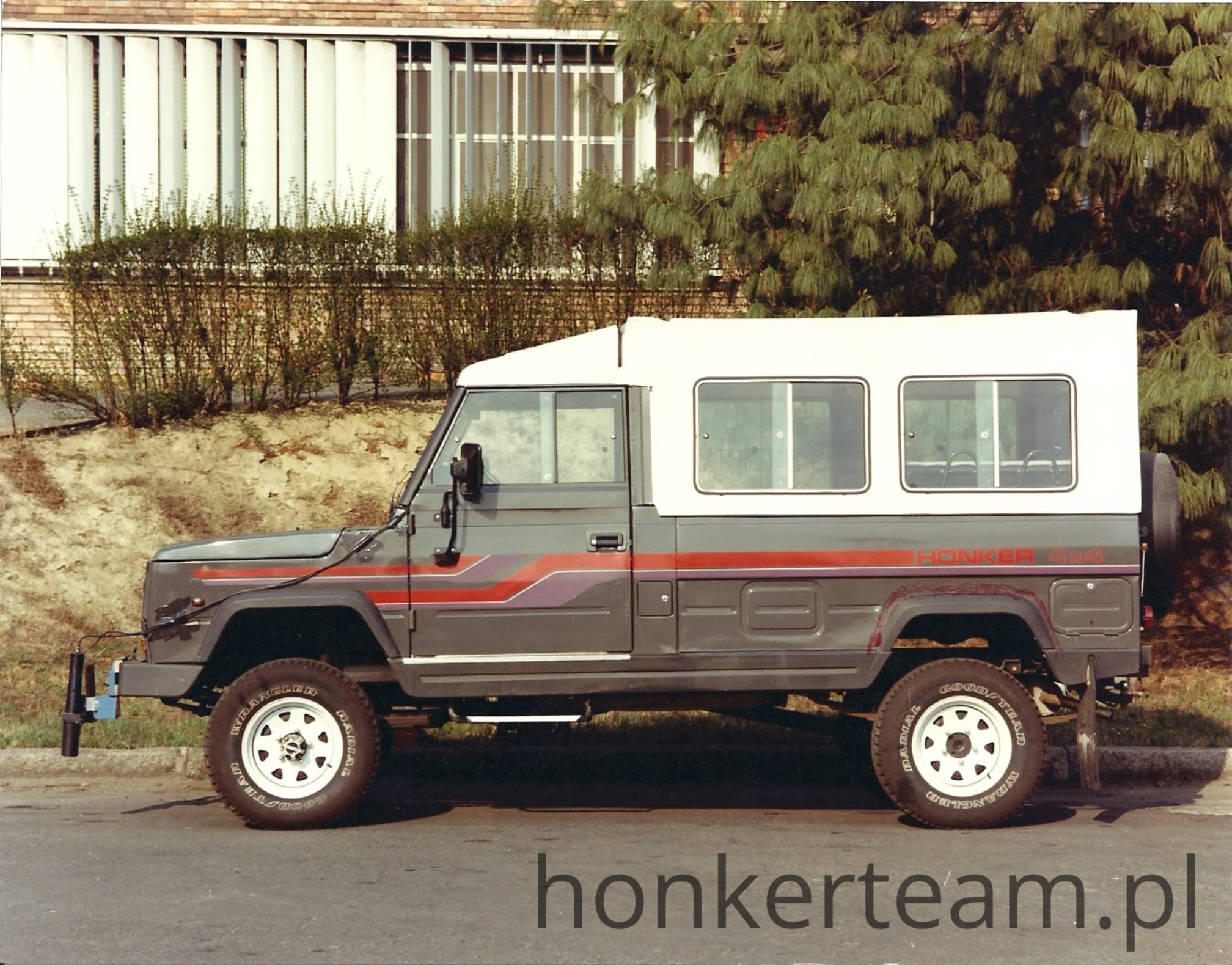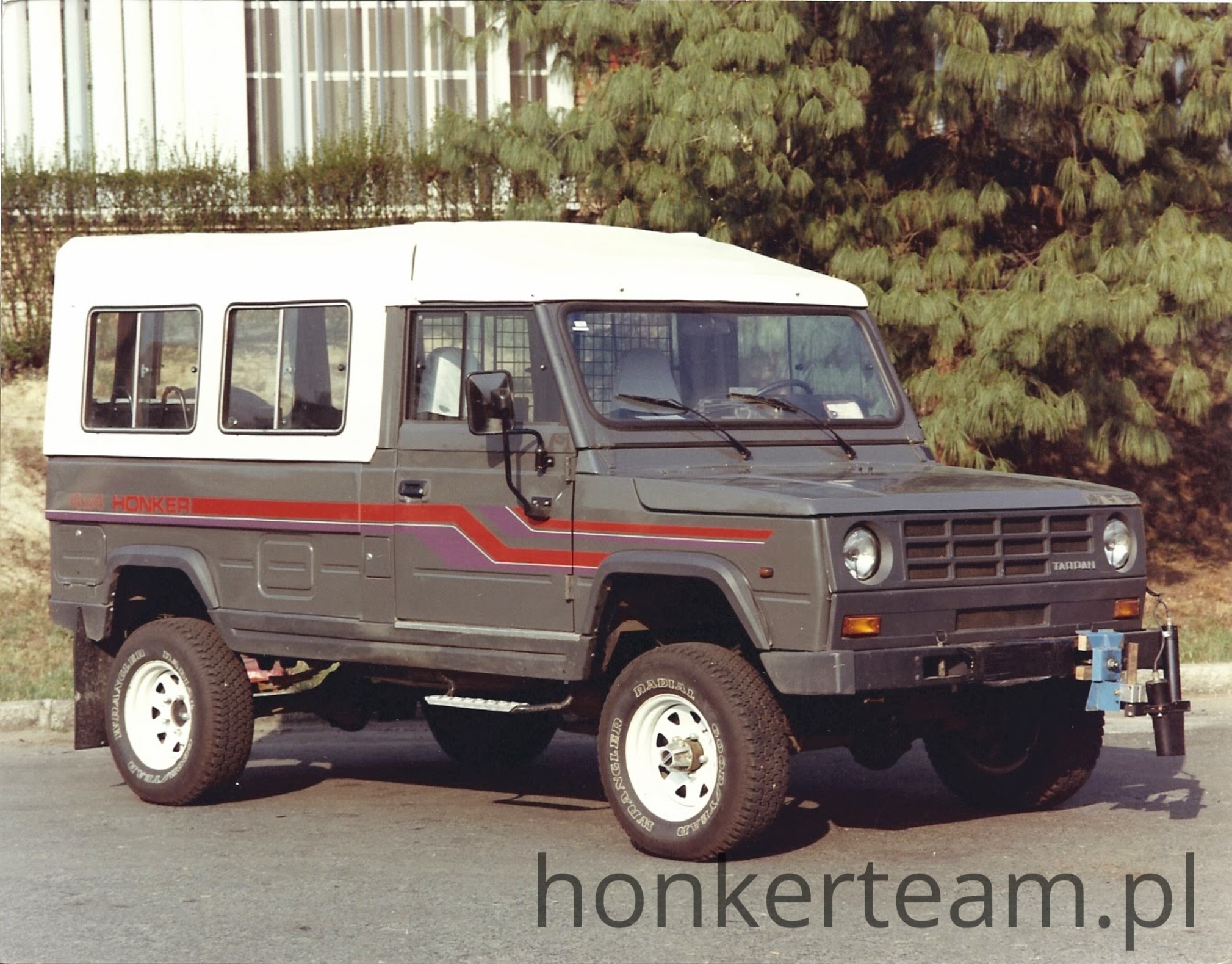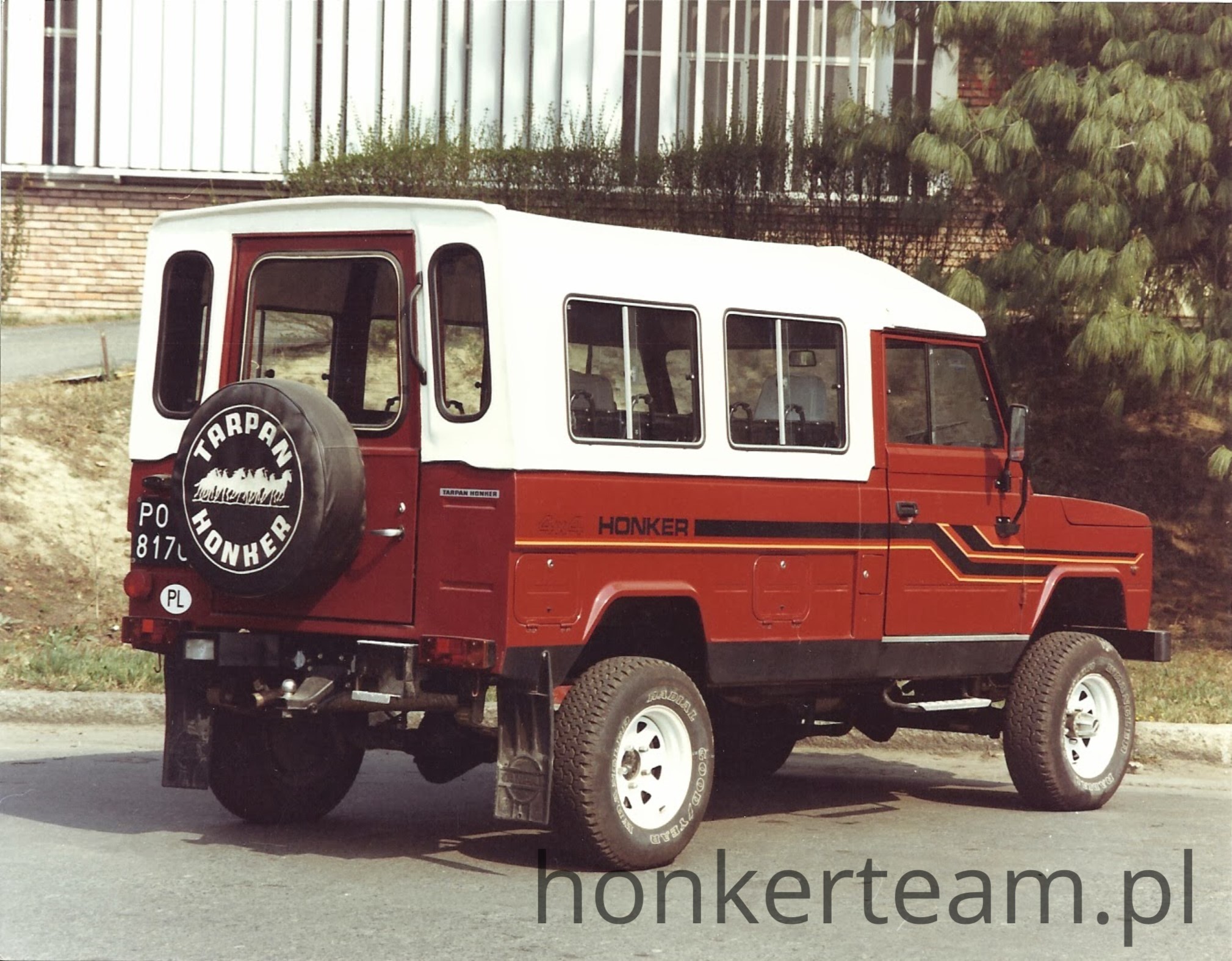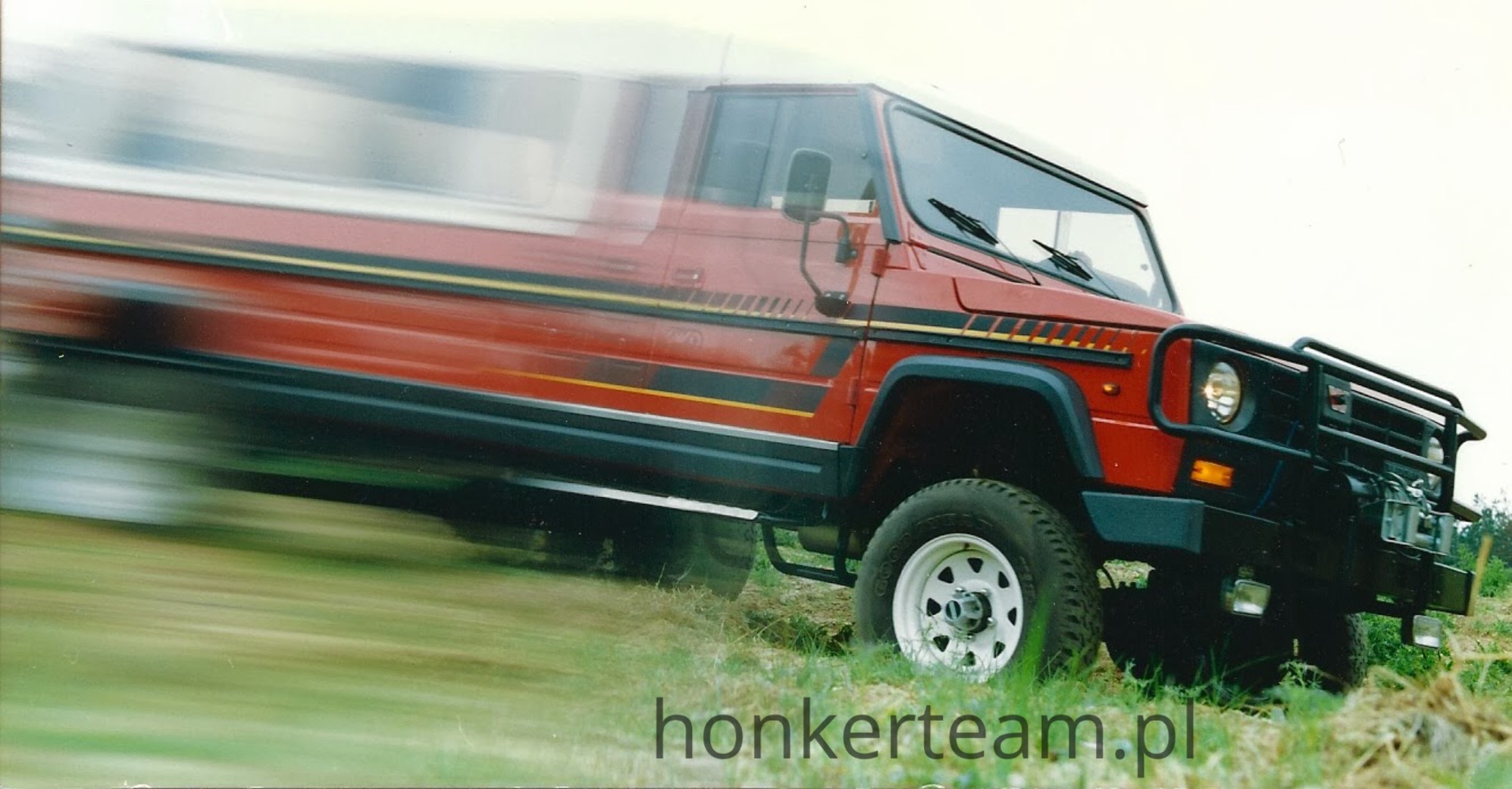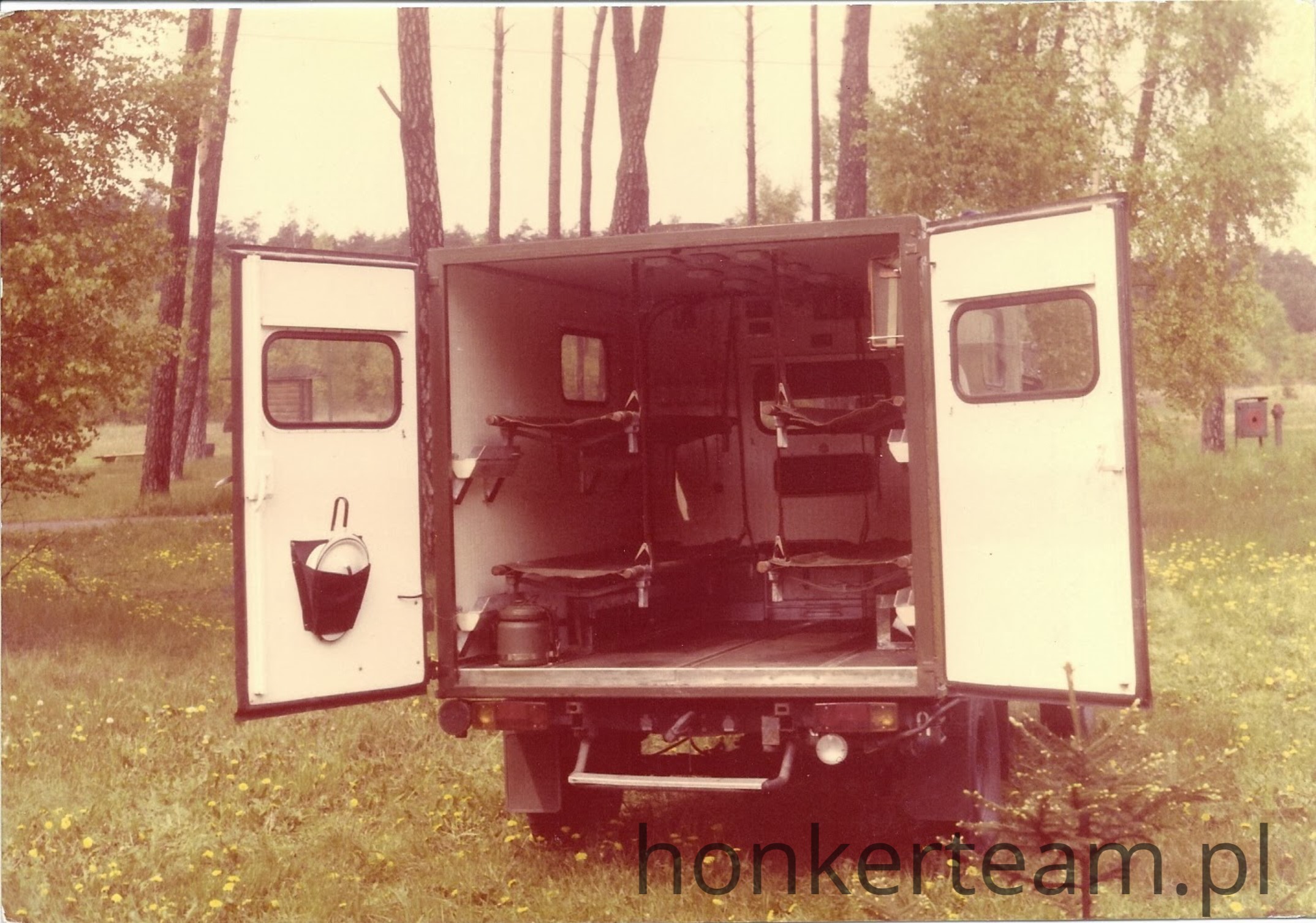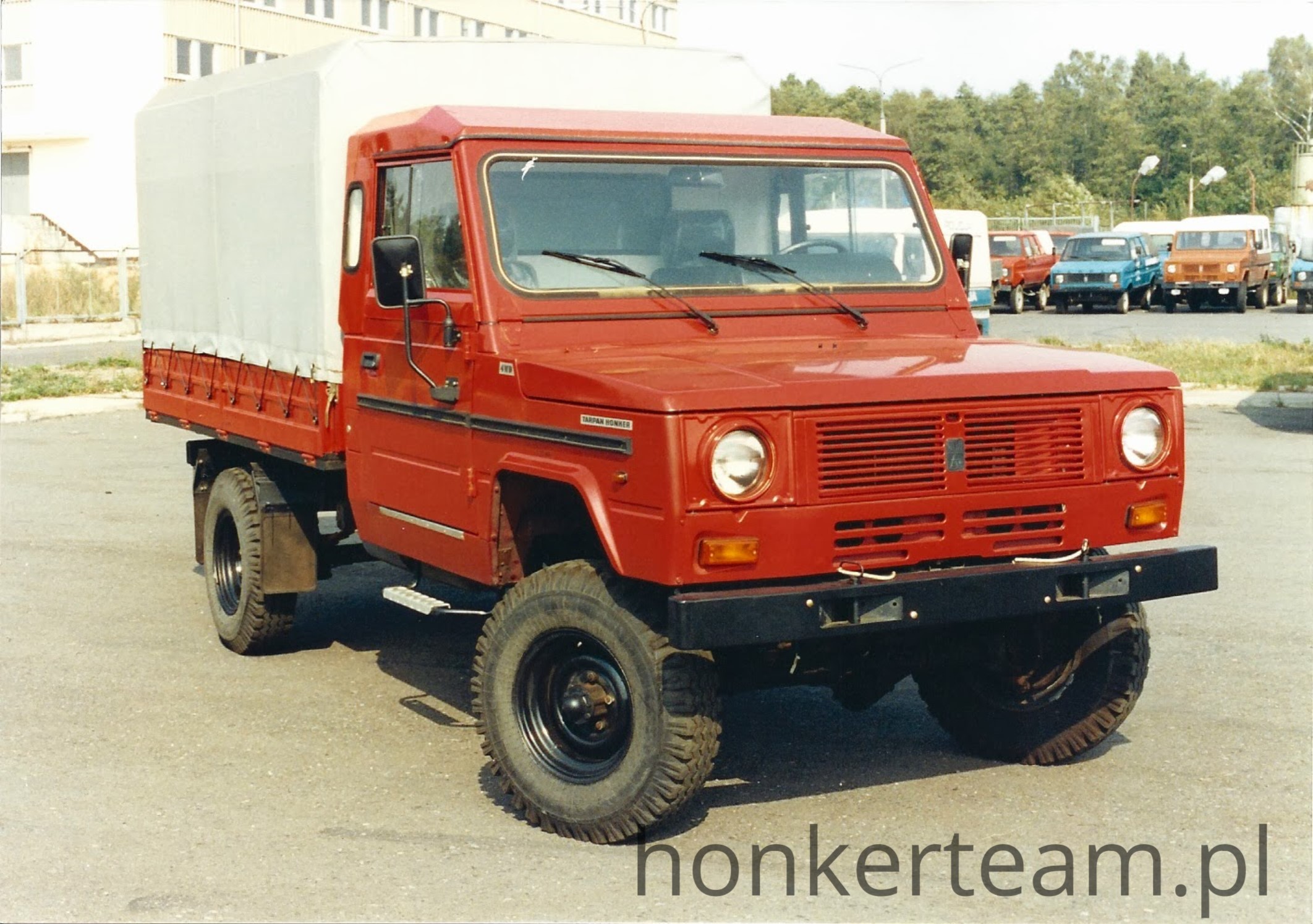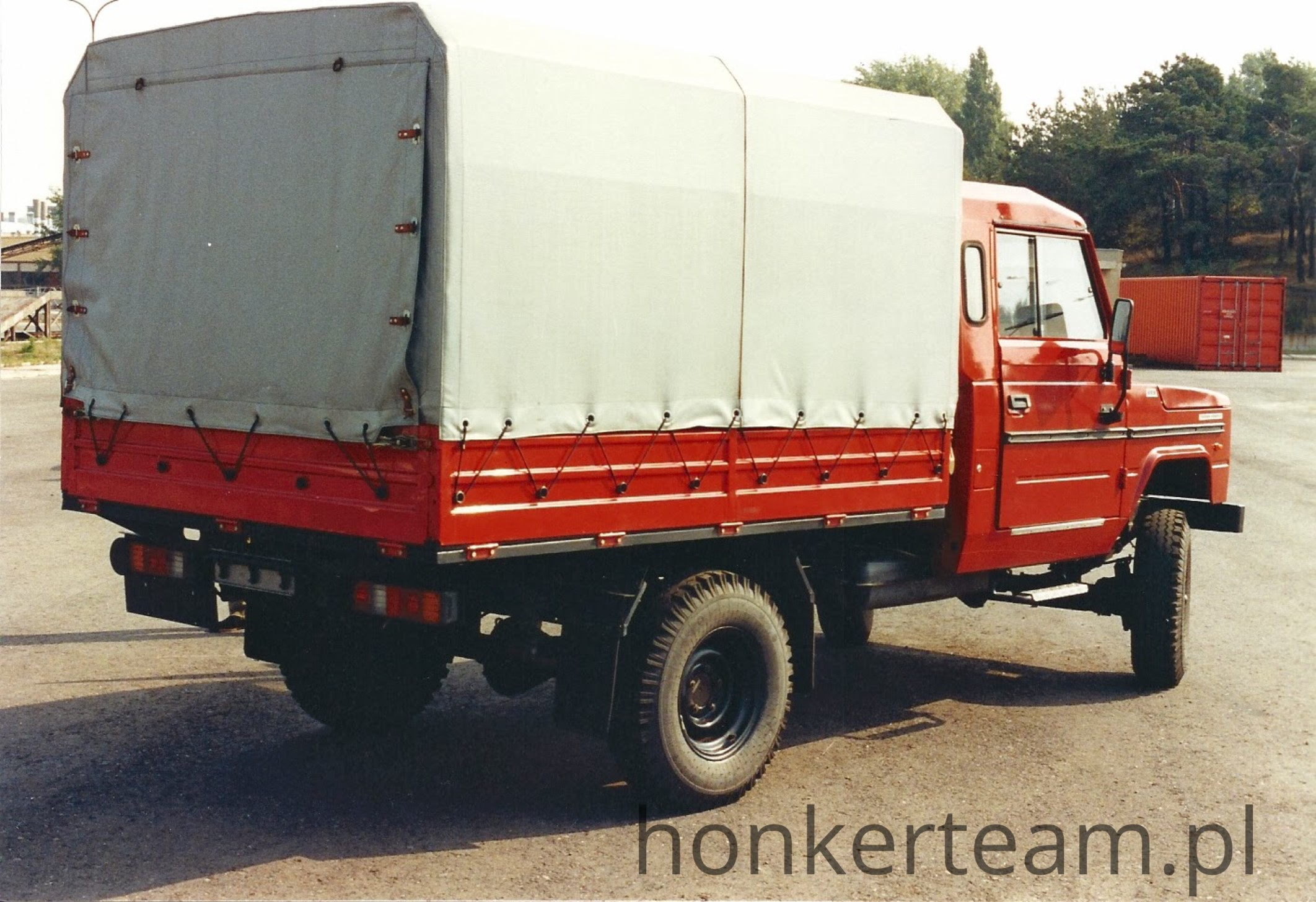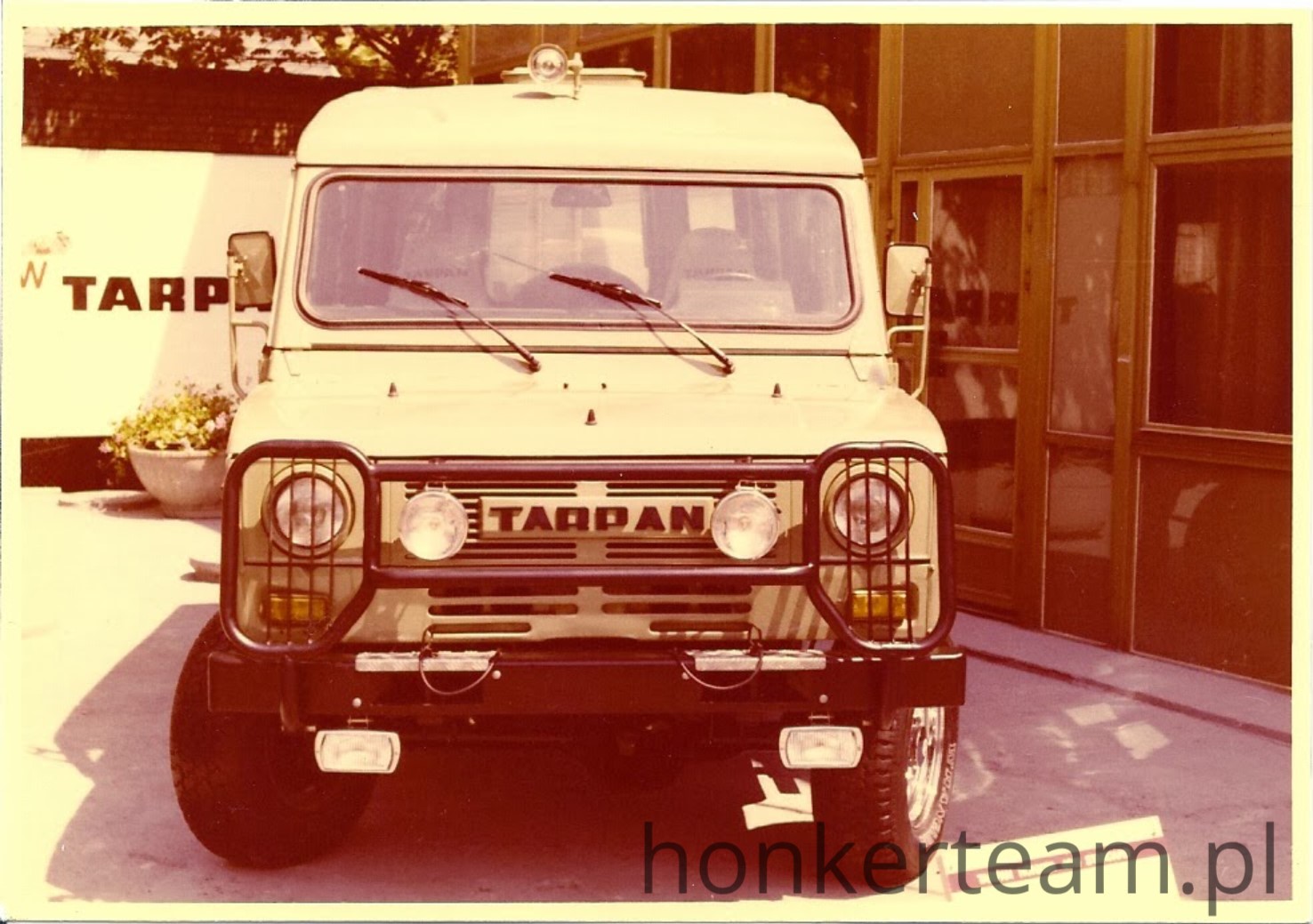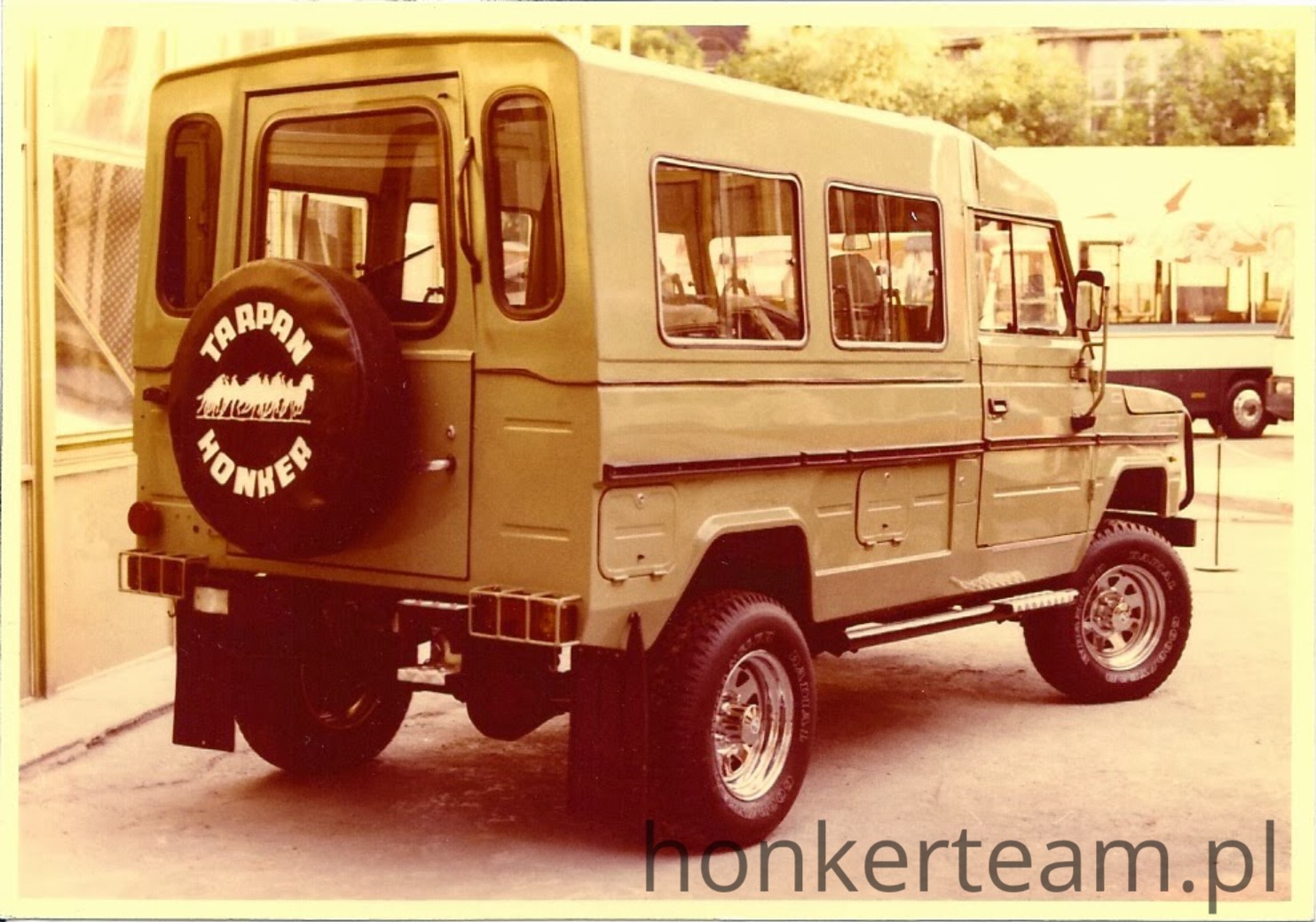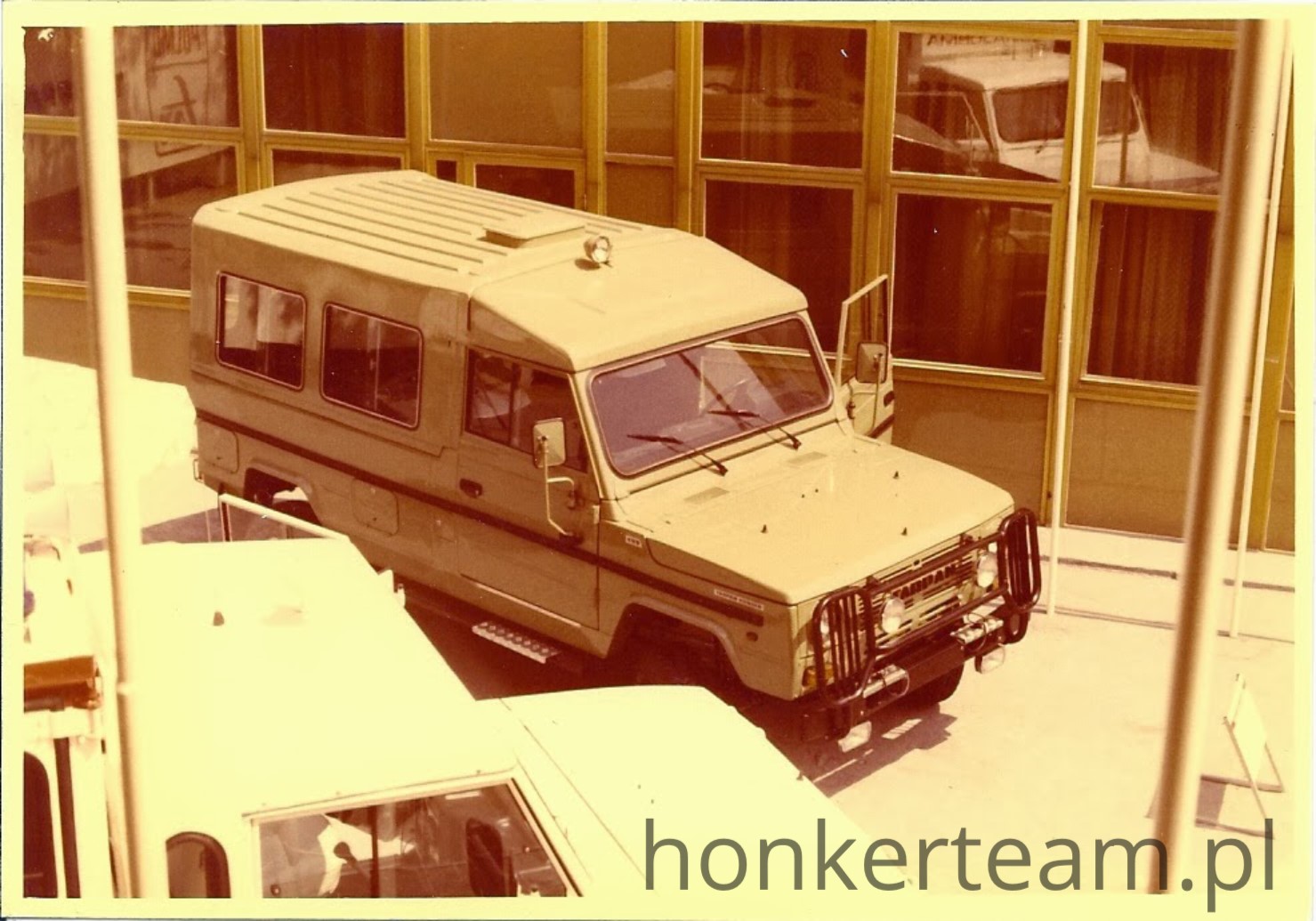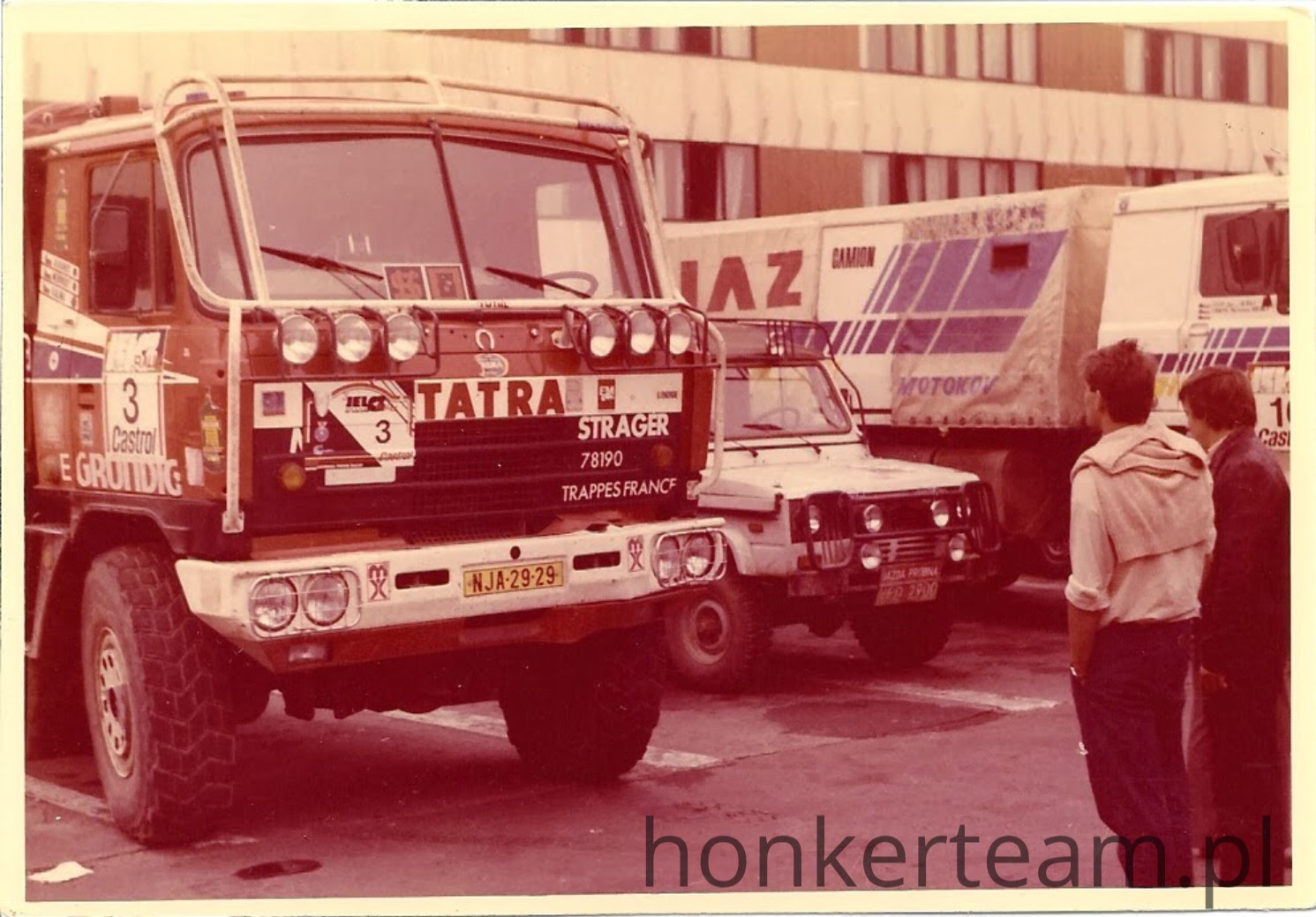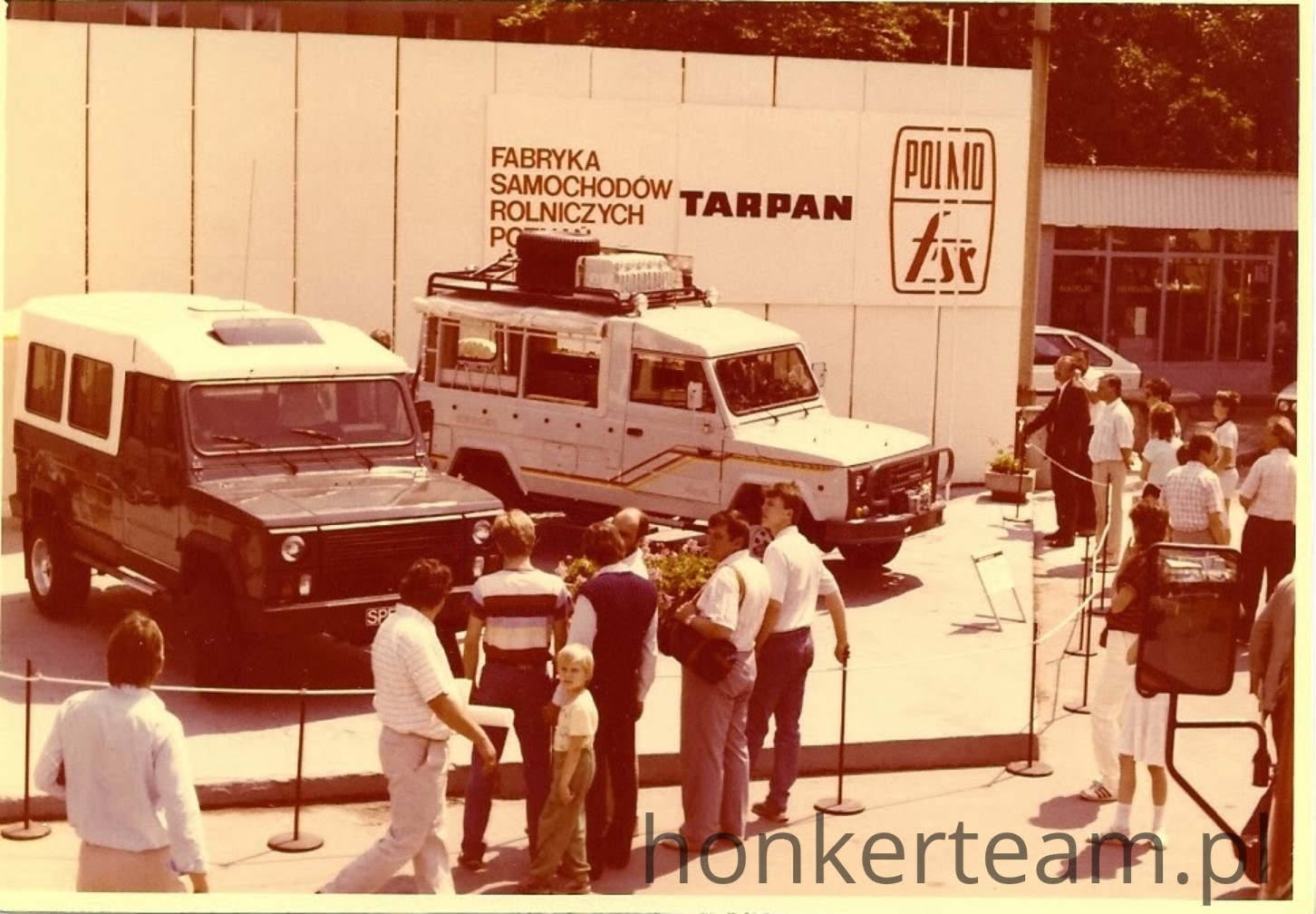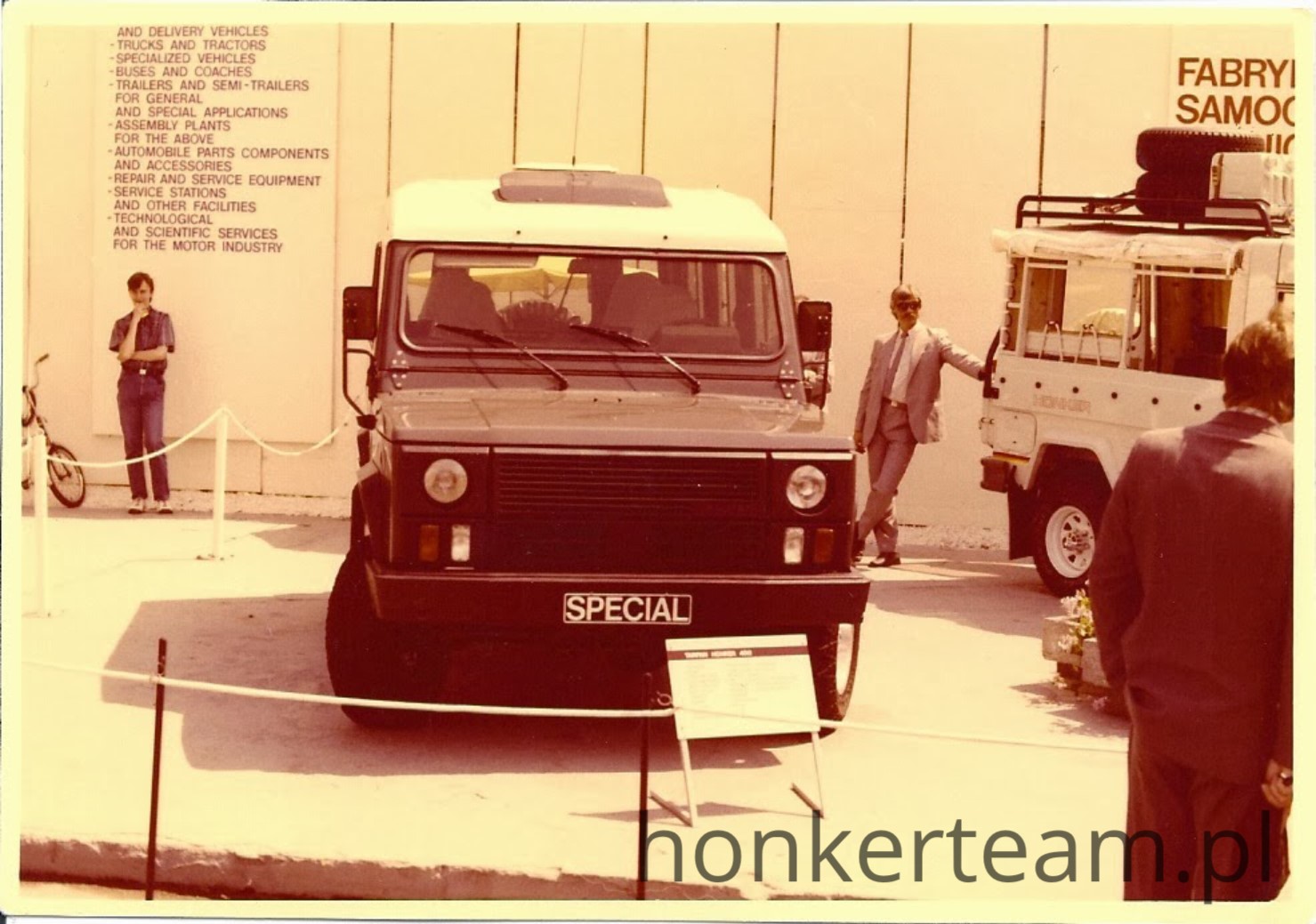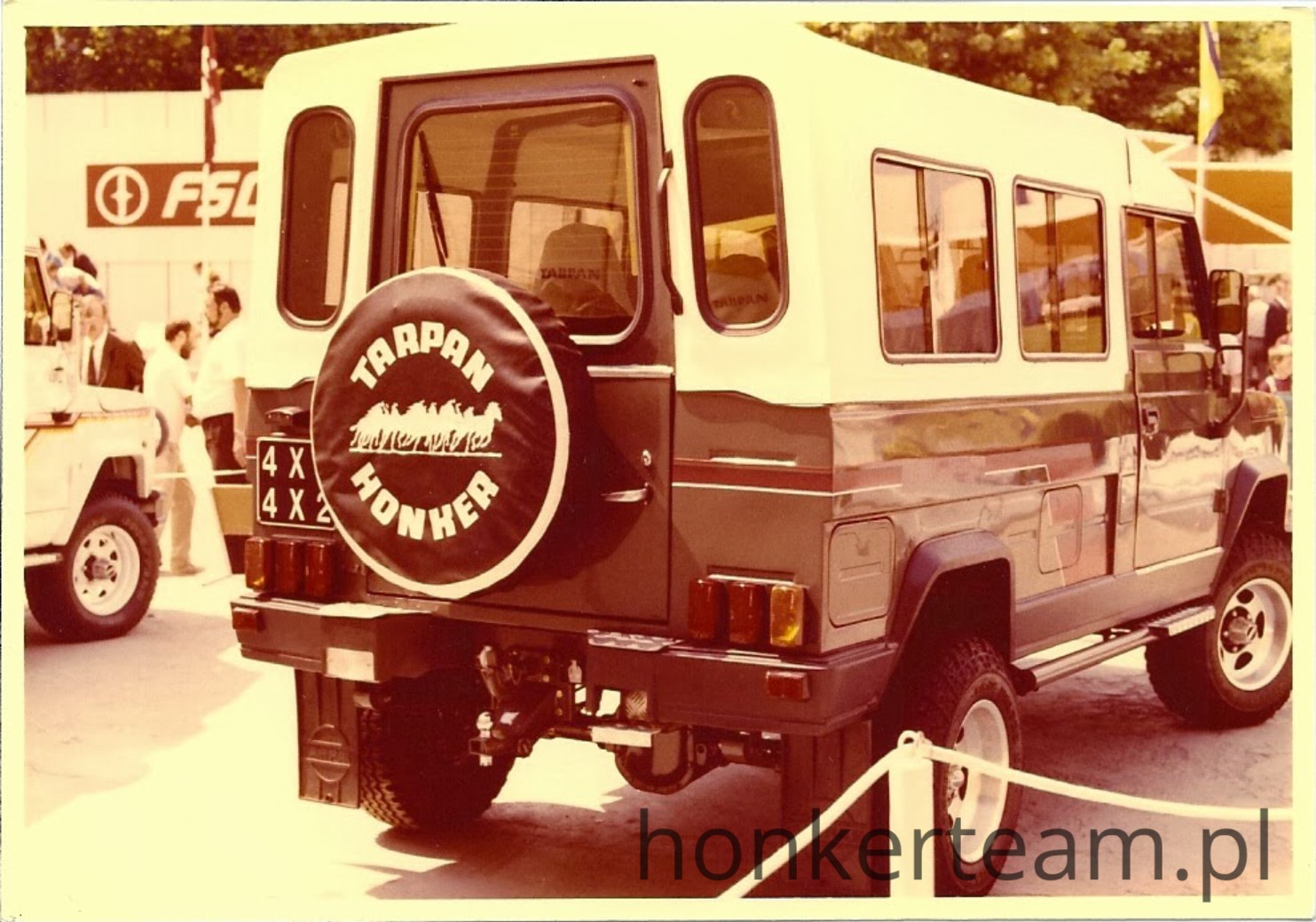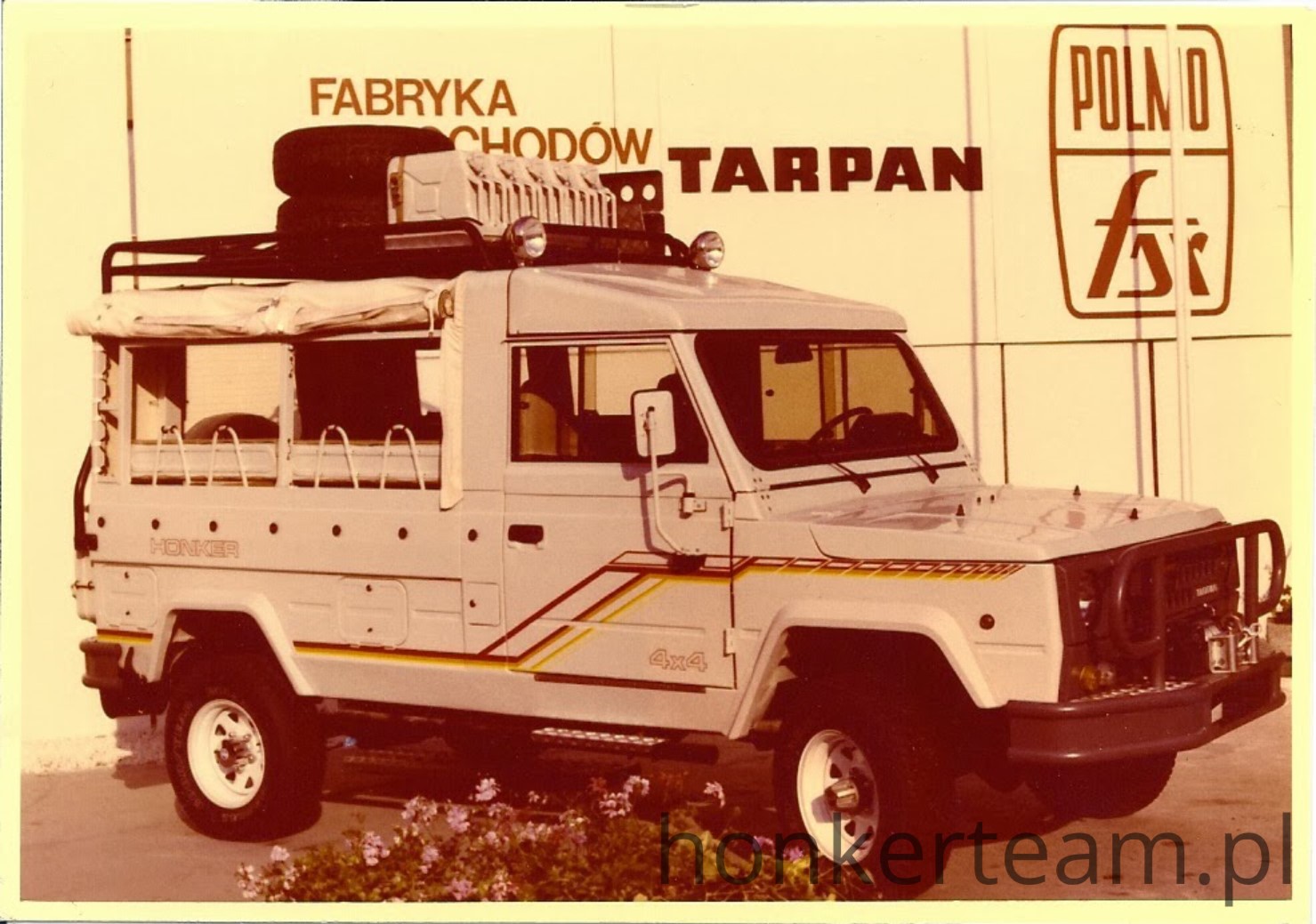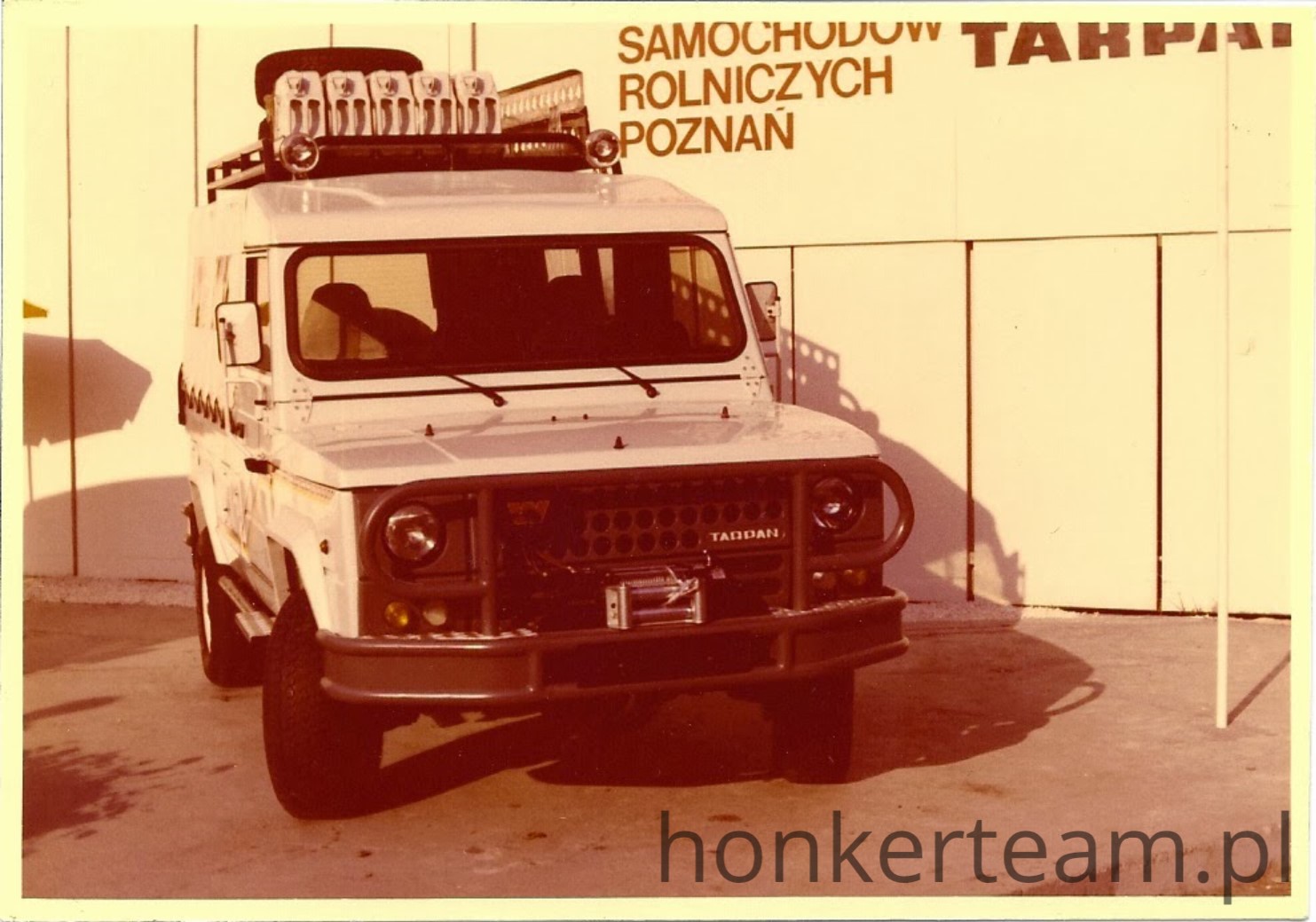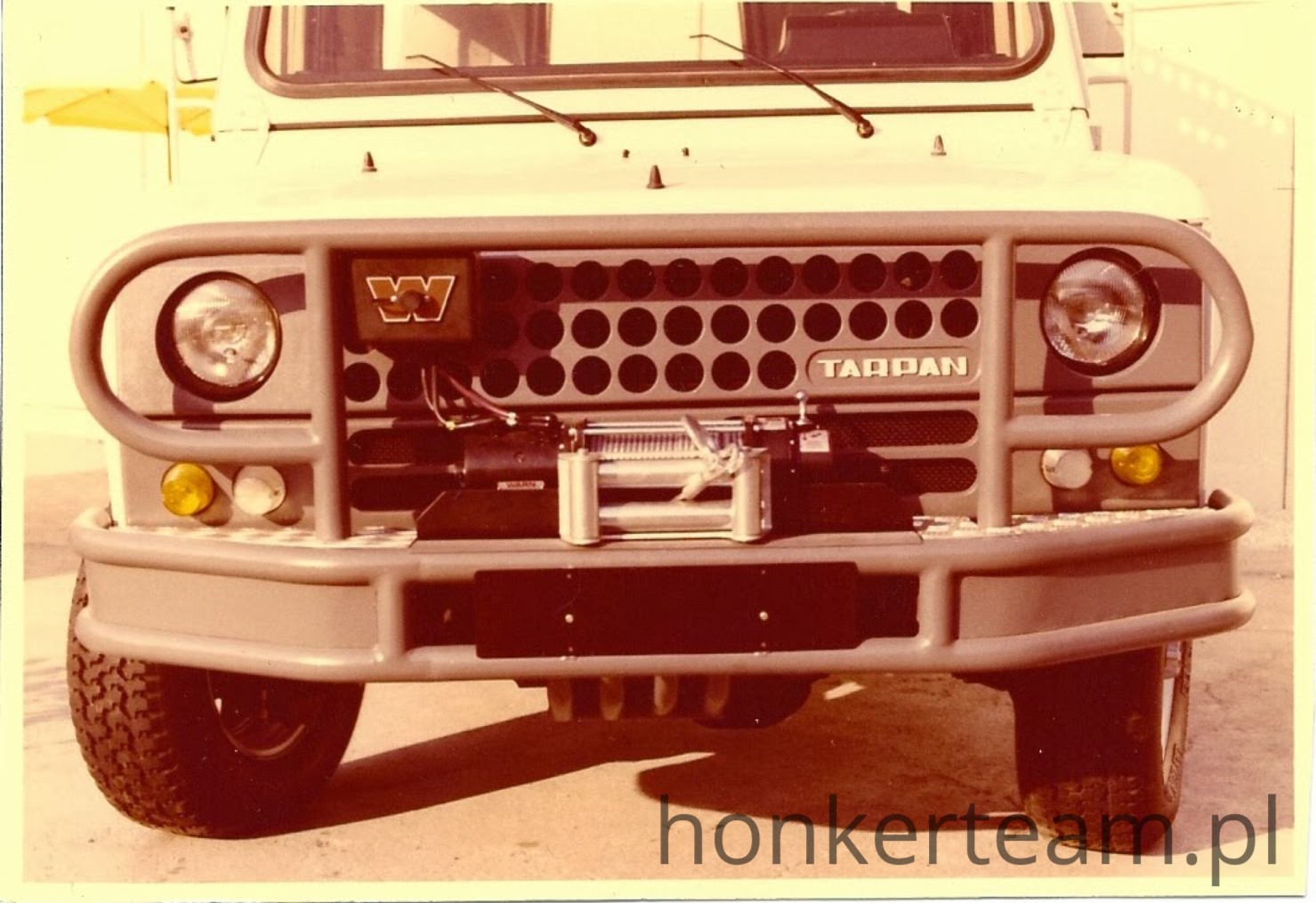Compiled by: Robert Kupczynski
In the late 1970s and early 1980s, a concept was created to build the first and last mass-produced Polish off-road vehicle. The car was constructed primarily for the military. It was to be a light all-terrain vehicle, capable of moving off-road and transporting ten soldiers with full equipment. The first prototypes of this vehicle were tested as early as the 1980s and were designated PW-1 and PW-2. The structure of the vehicle was based on the Tarpan, designed in Warsaw's PIM-ot and made in Poznan's FSR. In 1988, at the Poznan International Fair, the vehicle named TARPAN 4011 was shown to the public for the first time, and as a result of a competition held at FSR, the vehicle was renamed Tarpan Honker. This name was already given to the vehicles that entered series production starting in 1988.
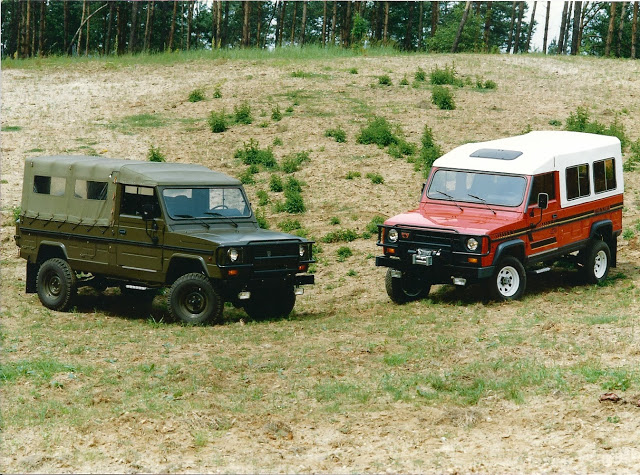

From the beginning of its production, the Honker was out of luck, being equipped for good with the gasoline engines used in the Polonez: AA (1.5l - 75hp), AB (1.6l - 82hp) and CB 1.6l - 86hp) although as early as 1985 a compression-ignition vehicle was tested with the 4C90 engine - for those times it was a sensational diesel engine developed by Polish engineers. The engine was characterized by low dead weight relative to its capacity and provided a greater power reserve compared to gasoline engines. The flexible engine made it possible to traverse dirt roads and wilderness more quickly and easily. During research on the Honker's design, they tested locking differentials in the front as well as the rear axle - but, unfortunately, bridges with locks were not put into series production, the introduction of locks would have allowed it to compete with leading off-road vehicles of well-known brands. During the research stage, tests were conducted on automatic as well as mechanical differential locks in the bridges as well as in the reducer. The behavior of a vehicle equipped with a rear axle stabilizer was tested - but it too was not introduced in series production - only after twenty years of production was it factory-fitted as well as the 4C90 engine (4CT90 euro2 and 4CTi90 euro3 versions), and an electrically controlled rear axle box appeared as an option.
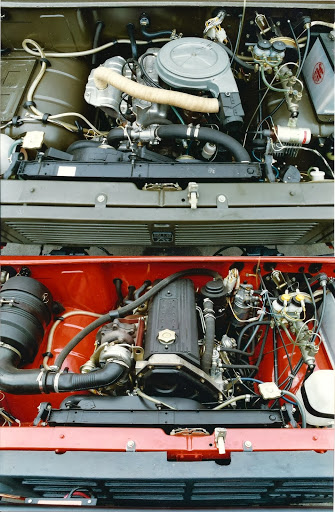
As for engines, Honkers with diesel engines left the Antoninek factory in the 1990s - at first it was a 2.5L - 75hp - slow-intake engine from IVECO and later a 2.5TD - 100hp - supercharged engine from the same company. The standard Honker had permanent four-wheel drive with a lockable central differential located in the reducer. On request, it was possible to buy a Honker equipped with a reducer from BORG WARNER, which was integrated into the gearbox and allowed the front axle drive to be disengaged and engaged, the front axle used clutches in the hubs that, when the drive was disengaged at the hubs as well as in the reducer, caused the drive shaft and half-shafts not to spin while driving - thus affecting lower fuel consumption.

It is interesting to note that Honkers with Mercedes engines were tested at the Poznań factory in the 1990s, as well as the fact that four prototypes of the short Honker (model 4032) were built there.

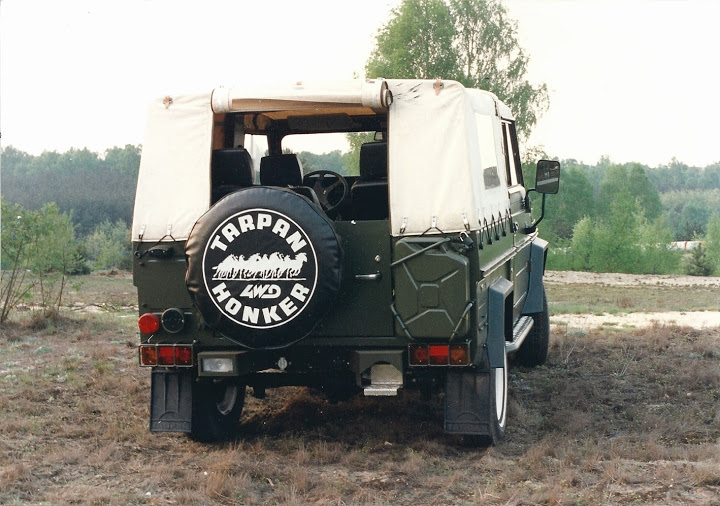
At the turn of the year, the owners of the factory also changed, and so in 1996 FSR sold the license for Honker production to the Korean company Daewoo, and after the collapse of this owner in 2001, the Honker brand was taken over by Andoria-Mot. Later in 2004 Honker was taken over by Intral-Poland. In 2007 Honker production was halted and the company was put into bankruptcy. As of today (since 2009), the Honker continues to be produced, this time by DZT Tymińscy. Changes of owners were not conducive to improving the image of this car and introducing necessary modernizations.

Honker engines and equipment have changed over time - for example, the 2004 HONKER 2000 already has a turbocharged engine with charge air cooling (2.5TDI 4CTi90 EURO III), Hypoid bridges with mechanical locking of the rear bridge, a silent reducer, rear axle stabilizer, 16" wheels , a "friendly" dashboard and a well-silenced interior.
Honkers produced since 2009 have new engines that meet EURO 4 and 5 exhaust standards . These are Andoria ADCR diesel engines equipped with common rail injection. 4-cylinder, in-line with a displacement of 2636 cm³, power from 115 to 150 hp and a maximum torque of 250 Nm for the engine set at 115 hp. The drive unit has been interlocked with a 5-speed manual transmission(KIA) integrated with a reducer(BorgWarner), through which drive is transmitted continuously to the rear wheels with the possibility of engaging the front drive.

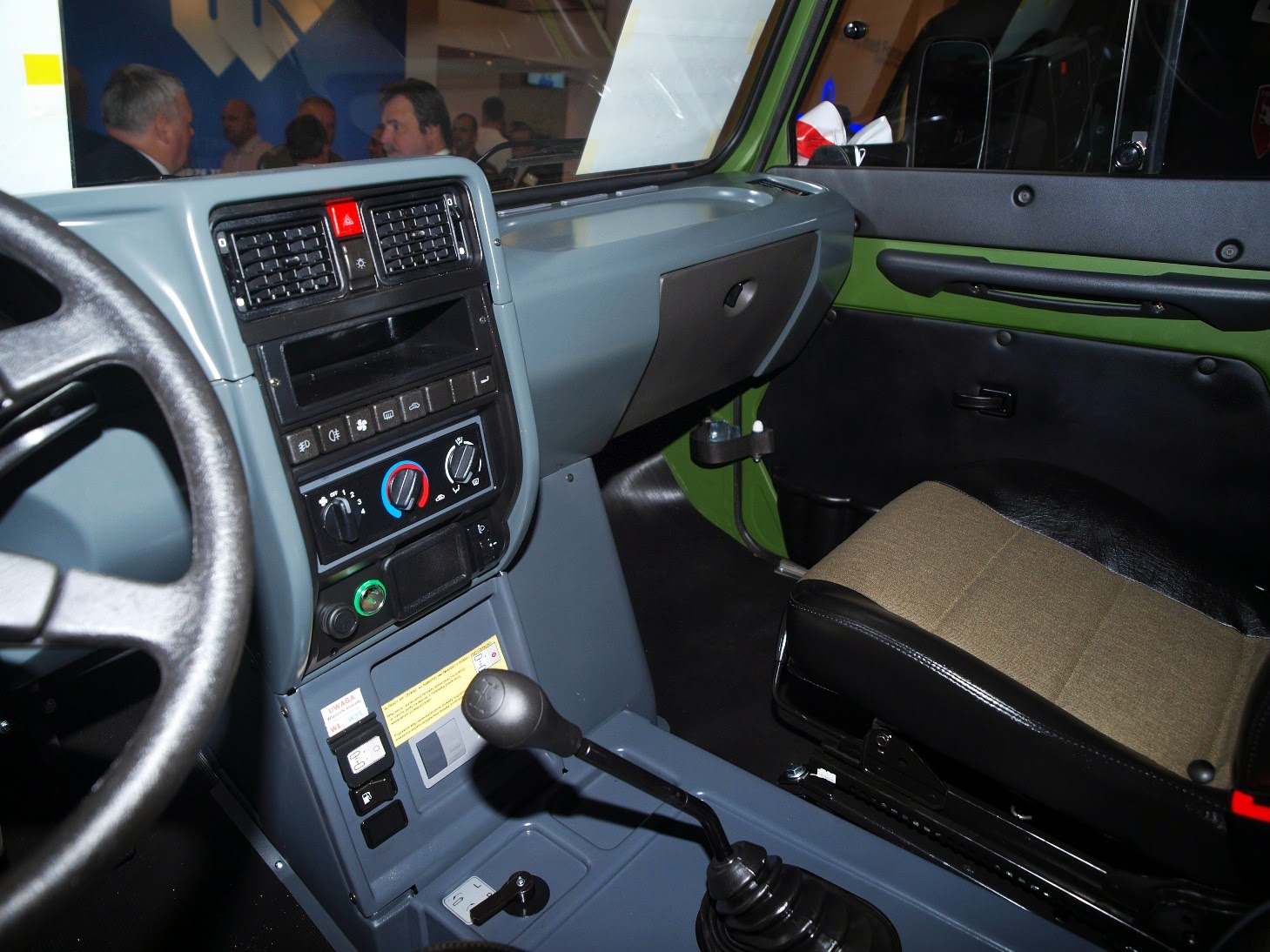
By design, the Honker is a very spacious and roomy vehicle, its interior is larger than a Land Rover 110, and carrying 10 people in it is no trouble. Honkers were used not only in the military, at one time the police also had them, and to this day they are still being used in the fire department, power industry, mines in mountain rescue and by private owners.
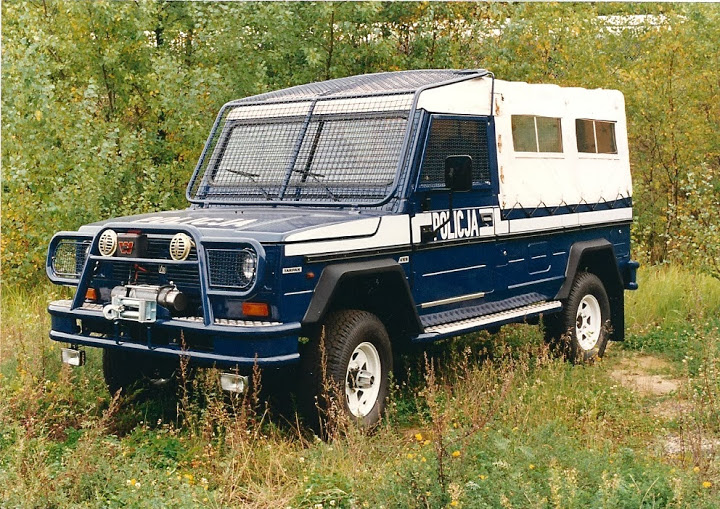
The vehicle performs superbly off-road, overcomes 68% of the elevation, side tilt is 42%, angle of attack/descent 44'/42' wading depth 80cm. I personally covered a well-known training ground with it, showing my friends with non-series Patrols and G-class what this underrated car can do on series 31" Russian tires.

Another advantage of the Honker is certainly the simplicity of construction, which is conducive to garage mechanical as well as sheet metal repairs. Unfortunately, the list of disadvantages is larger, certainly the quality of sheet metal and its durability leaves much to be desired, howling reducers and twisting bridges are a constant affliction of copies produced until 1996. Certainly, the first braking system with drums on all axles was not very effective, but fortunately, over time, disc brakes on the front axle were introduced, a larger brake servo system, hypoid bridges, and the design of the reducer was changed to make it quieter.
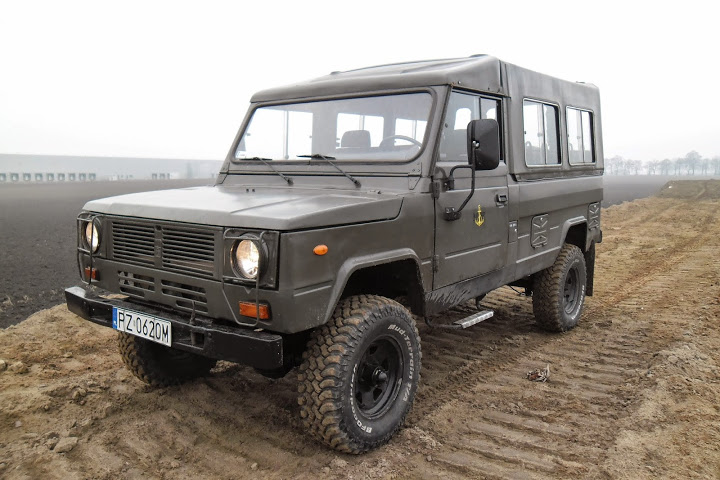
Most of the copies available on the secondary market are state-owned vehicles and their condition leaves much to be desired. There are still people who buy such cars and bring them to working order. Contrary to appearances, they can still be purchased on the spare parts market at affordable prices, and with a good flair, such a vehicle can be restored to look like the one from 1991.
Later, just remember to preserve the body well, lubricate the 21 grease fittings and the vehicle in private hands can serve for many years.
There are enthusiasts who make expeditions with their Honkers, for example, to Albania, and this is no mean feat for this vehicle. The vehicle is perfectly suited for such expeditions - a lot of space in its interior, storage compartments as well as the space in the rear part, which accommodates a 1600x2000cm mattress, allows for such trips.
Honker is perfectly suitable for various modifications, due to the fact that the reducer is connected to the gearbox with a short shaft - you can afford to install a variety of engines, most users install proven Mercedes engines, but there are also drive units from Fords, 1.9D from Polonezes, etc. The suspension on springs provides opportunities for suspension lifts. The interior also undergoes changes - I have met Honkers with a dashboard from a Mercedes 123 and other "modifications" - such as panelled upholstery with a bed and cabinets in the passenger compartment. There are also those who installed air conditioning in their Honkers.
The operation of the vehicle itself is no longer very expensive, for example, Honker with a 2.5D IVECO engine consumes on the road at speeds of 80-90km/h - about 11l ON/100km. With standard discounts, vehicle insurance is a cost of about 600 PLN/year.
Of course, the manufacturers of the vehicle also took care of rich additional equipment, and so it was possible to retrofit Honker with plastic fender caps, sunroof, additional lights (searchlights, etc.), roof rack, canister holder, branded winches, tubular guards so-called "Kangaroos" of the front body belt - the vehicle shown here is a factory tubular bumper with integrated kangaroo protecting also the oil pan from damage. "Kangaroos" of the front bodywork strip - in the presented vehicle there is a factory tubular bumper with an integrated kangaroo that also protects the oil pan from damage, in addition there are installed factory massive sills on which you can lift the car with the help of, for example, Hi-Lift, the whole thing is completed by a rear tubular bumper protecting the combination lamps and a massive roof rack. On the bumper was originally mounted plate for the winch, In addition, the rear bumper has hangers, on which you hang the original splash guards so as not to tear them off in the field. There was also an option to equip the reducer with an output for a power take-off and mount, for example, a mechanical winch.
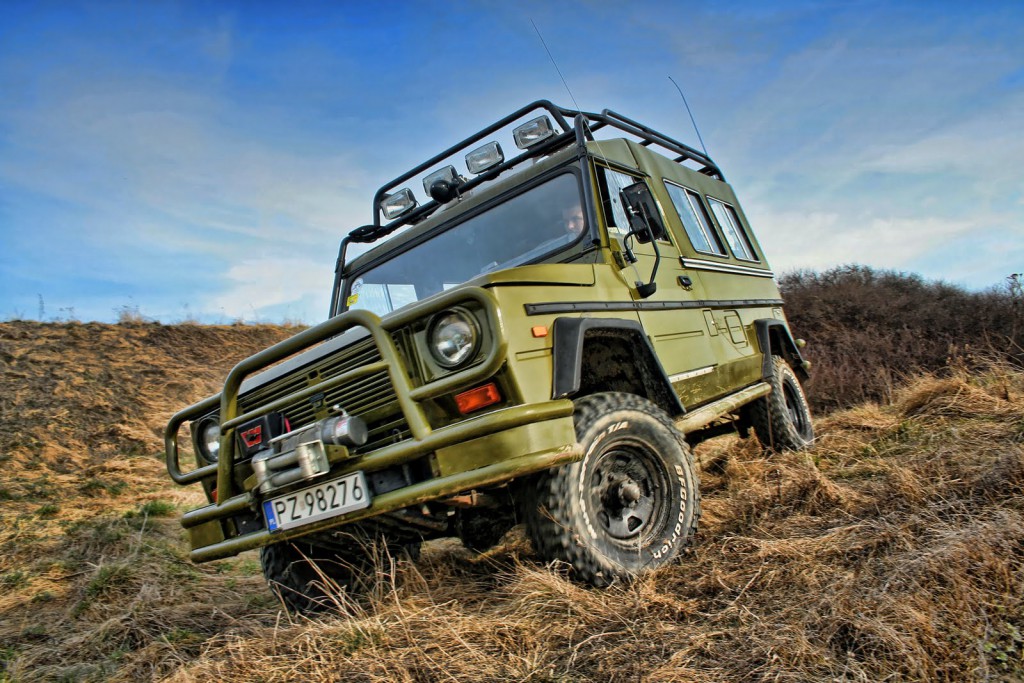
Honkers were manufactured with various seat configurations - the most common are the 10-seat versions - 2 front seats and four two-seat benches arranged along the length of the car (with their backs to the side walls). As an option, 2 single seats were mounted, arranged like the seats in the driver's compartment and two benches behind them. The benches folded down and an even space for carrying cargo was obtained. Under the benches were storage compartments accessed through an external door located in the body and locked. In the new 2004 version of the Honker, access to the storage compartments is also possible from the inside after lifting the benches.
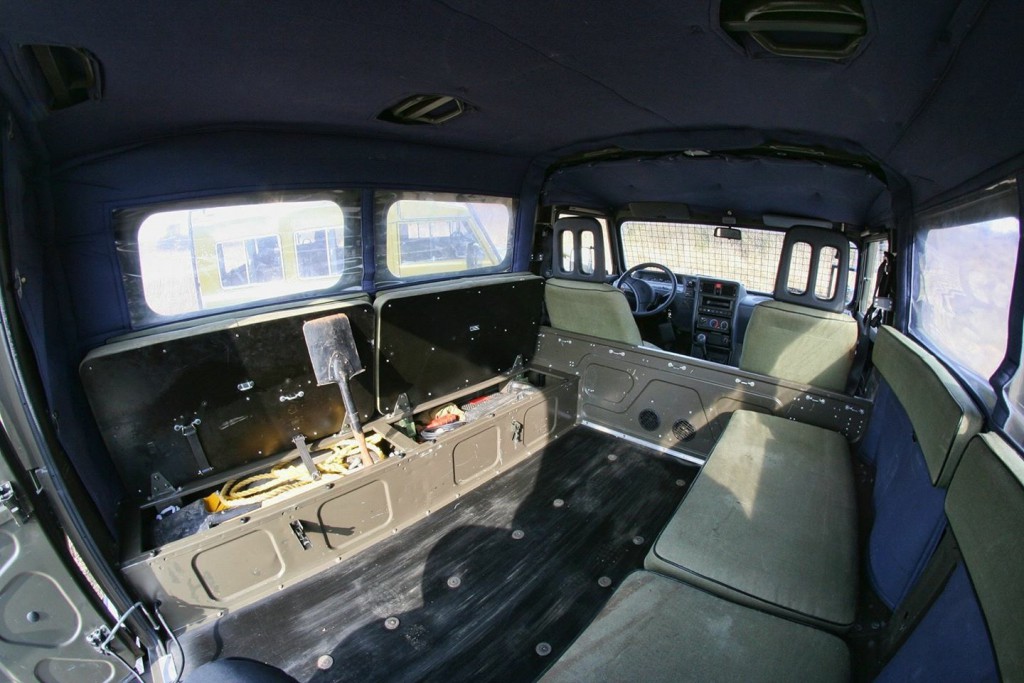
The bridge vents have not been forgotten either, and the air filter is protected from flooding when overcoming water obstacles. In the 2004 car, flexible vent hoses are supplied to the vents from the factory, and the air filter inlet is brought out to the underbody above the hood - in this case, there is a sand filter on the inlet, but after removing it, you can, for example, install a "snorkel".
The 1991 model shown above is equipped with a 2.5-slow-suction diesel that has a power output of just 75 hp, but nothing could be further from the truth - the torque of this engine makes it unstoppable, and with the reducer engaged, you can step out of the cab and check at slow speed how the vehicle handles rough terrain. The vehicle has a five-speed transmission and second gear is used for starting when driving in urban conditions. IVECO's engine is not, shall we say, a "quiet" engine, but the 2004 has an Andrych turbocharged engine with an intercooler with a capacity of 2.5 liters and 105 horsepower - this engine is very quiet and its operating culture is very high, although it needs some revs to get the torque.
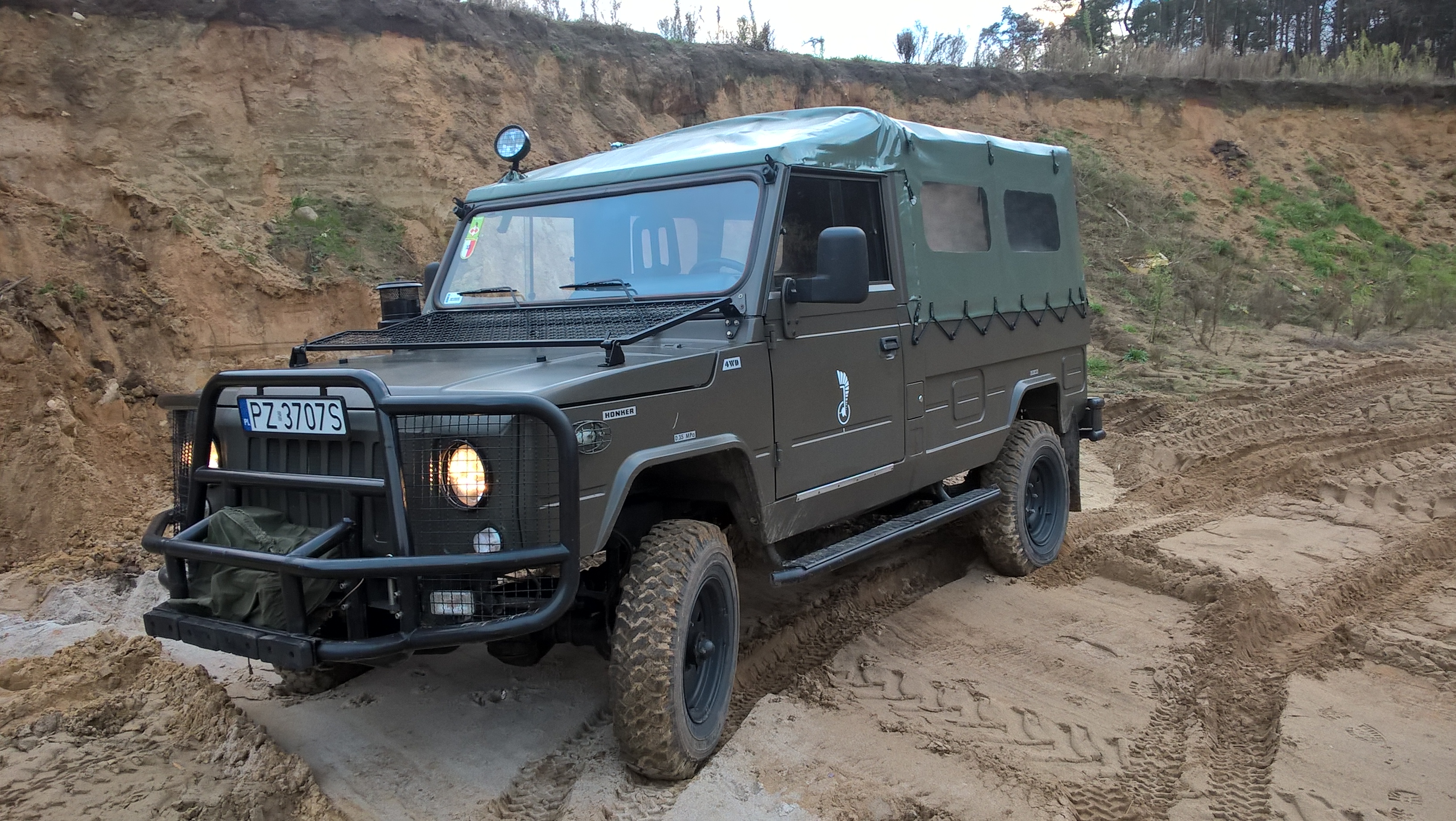

Personally, I own, let's say, a couple of Honkers and my adventure with these vehicles began as early as 1993 when in the army I had the opportunity to drive a sanitary version of the Honker and I will say that if someone wants to drive such a car and has, let's say, a "garage" background at the same time, it is worth having this unique Polish vehicle. One, that many of them have already ended their lives in steel mills and each restored and operational - read "rescued" Honker contributes to the cultivation of the tradition of Polish vehicles, and two, that at rallies there are plenty of G-classes, Uazas, Gazas and other vehicles and Honkers can be counted on the fingers of one hand. I attend military rallies and boast that the Honker arouses interest, especially when it shows what it can do in the field. Personally, I think it is a very underrated Polish off-road vehicle, which, due to bad times and the fate of its production, has not been properly promoted.


